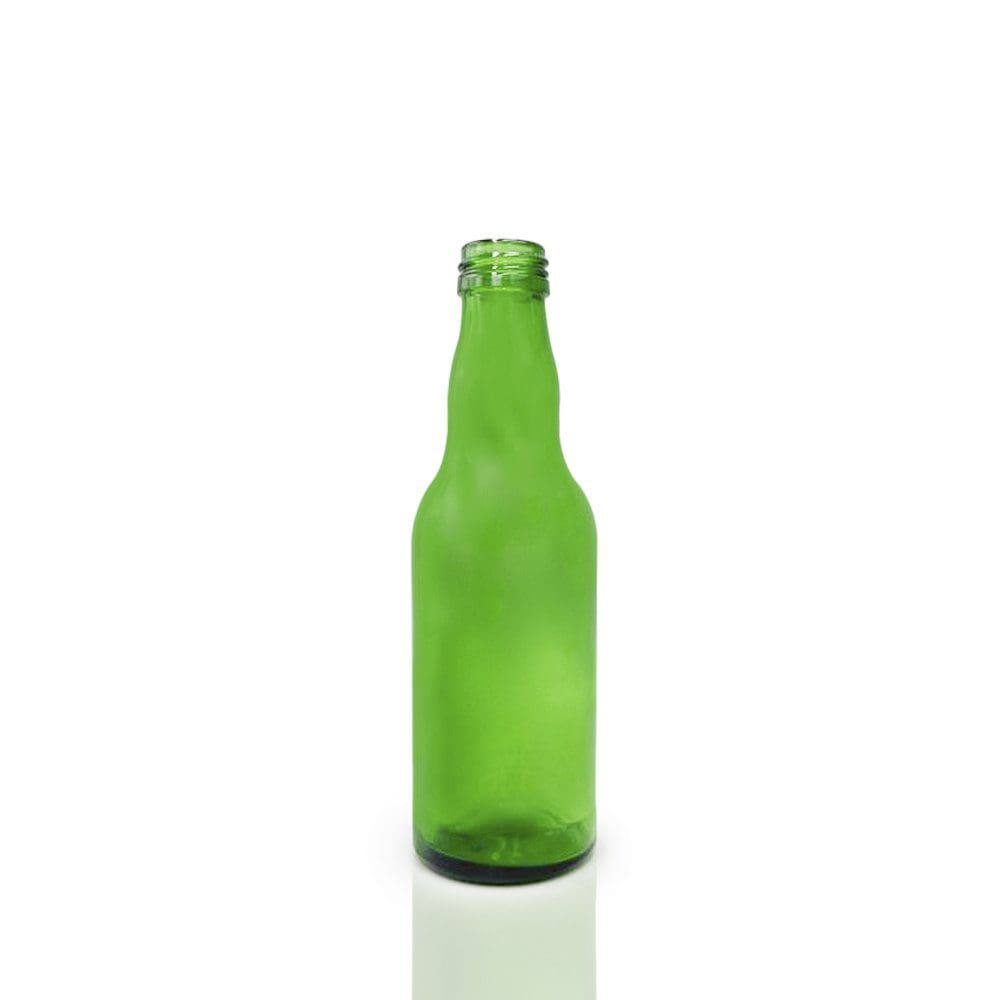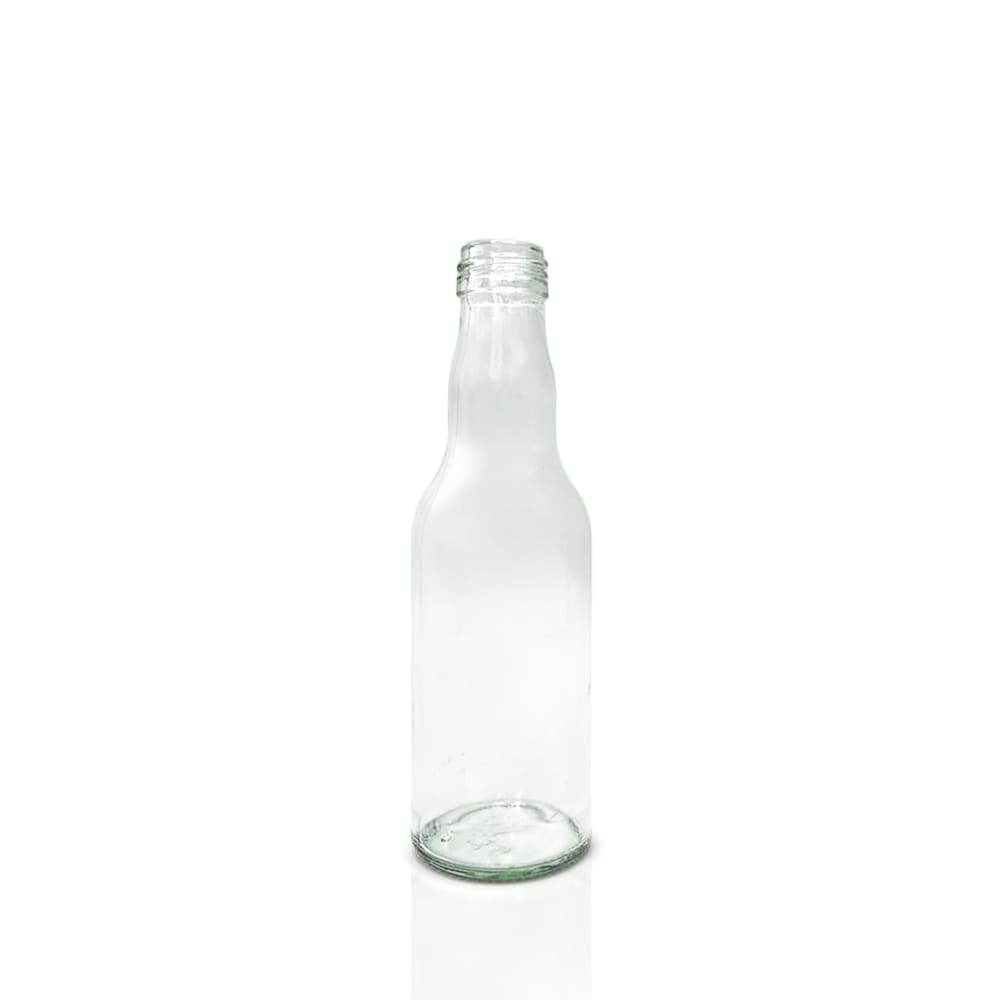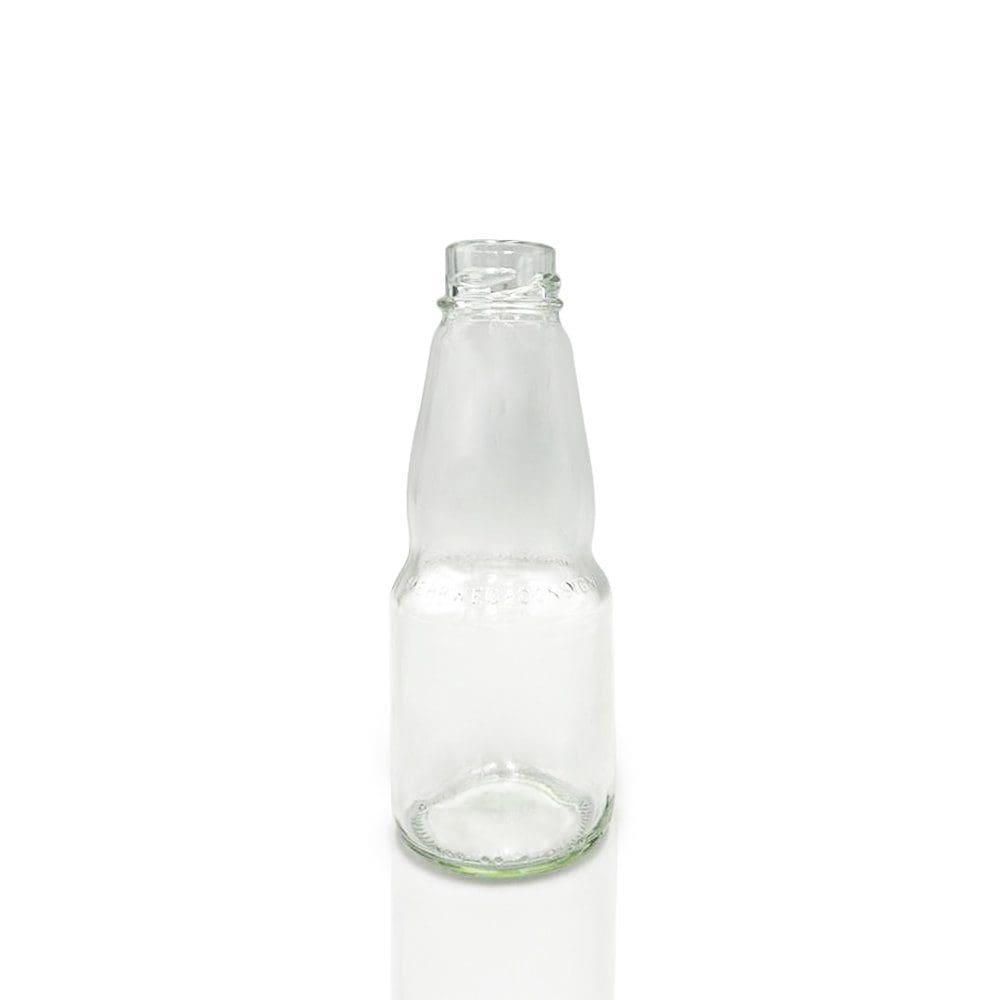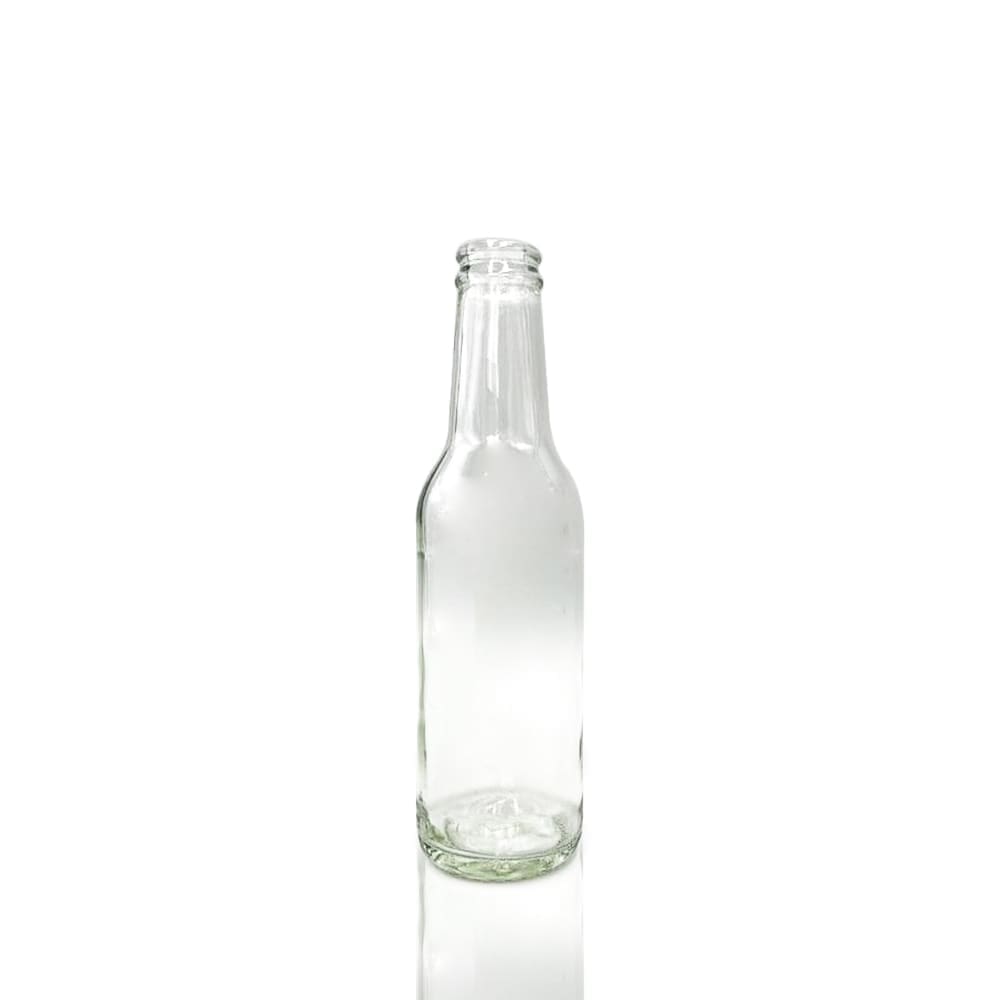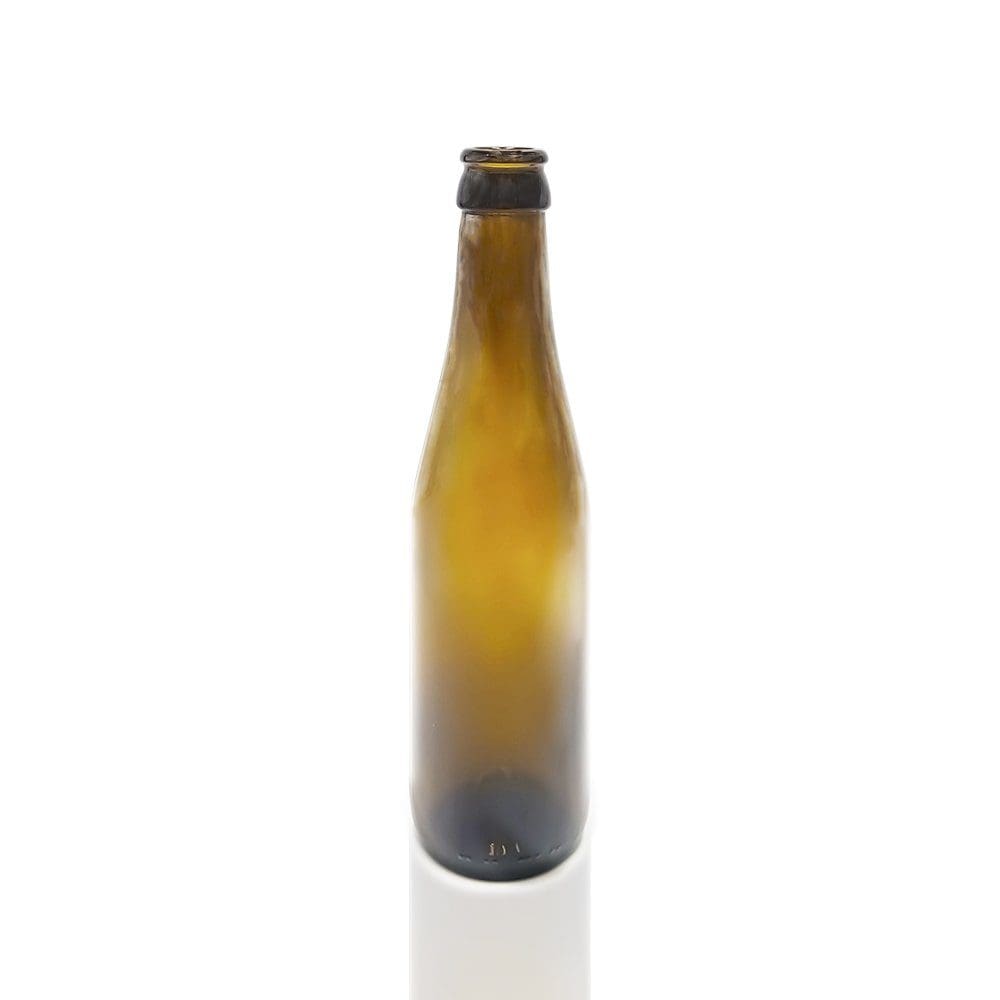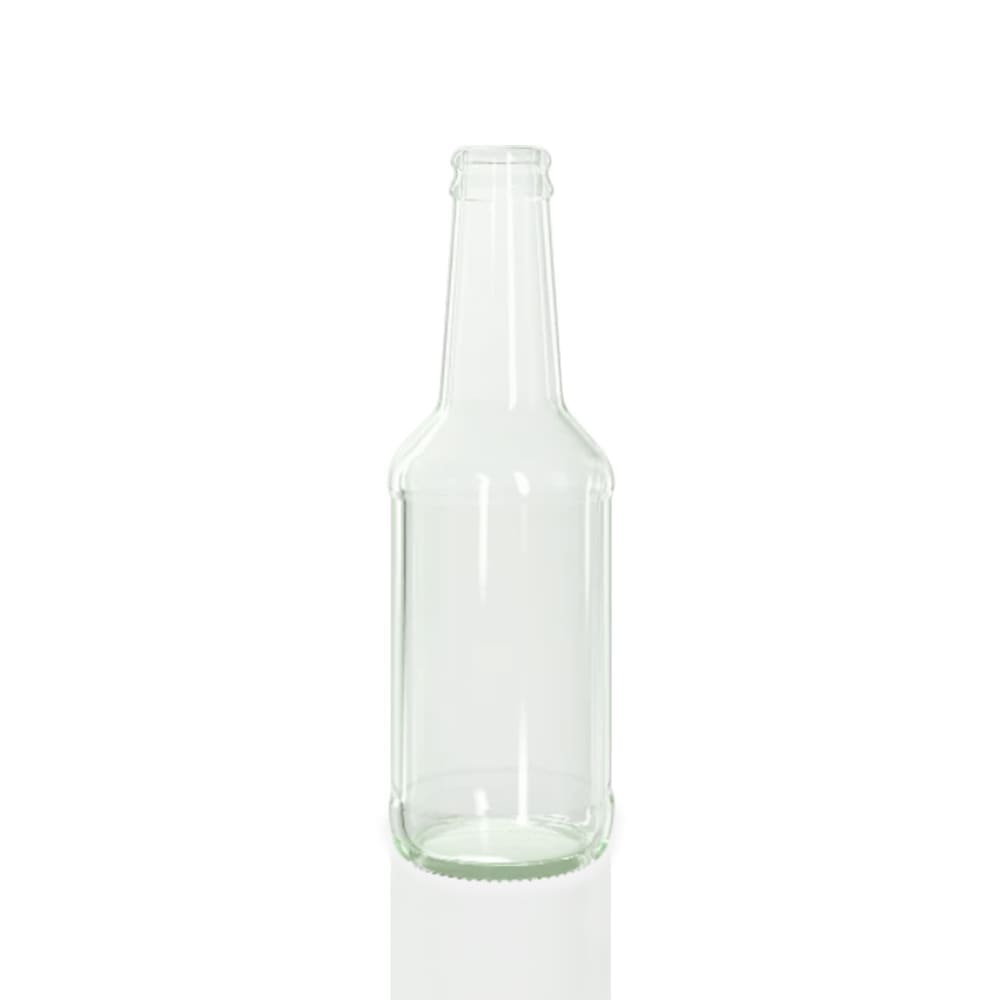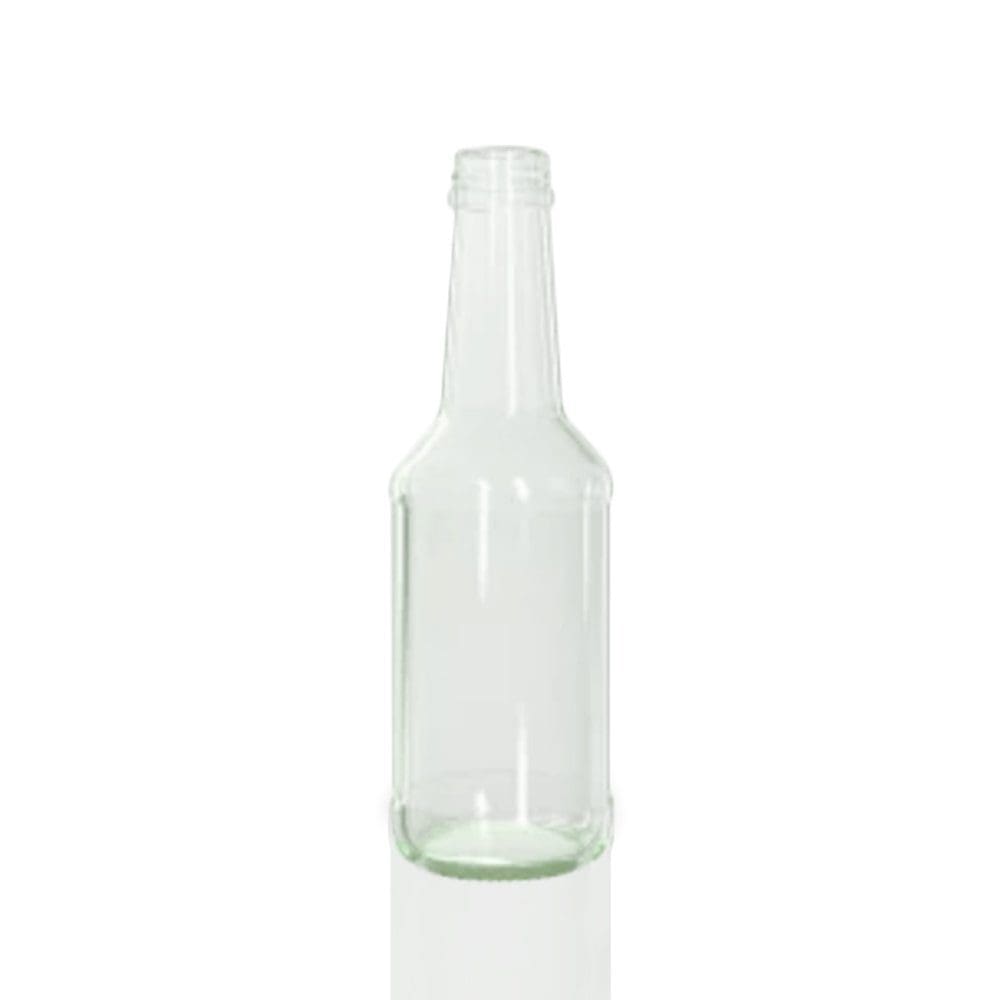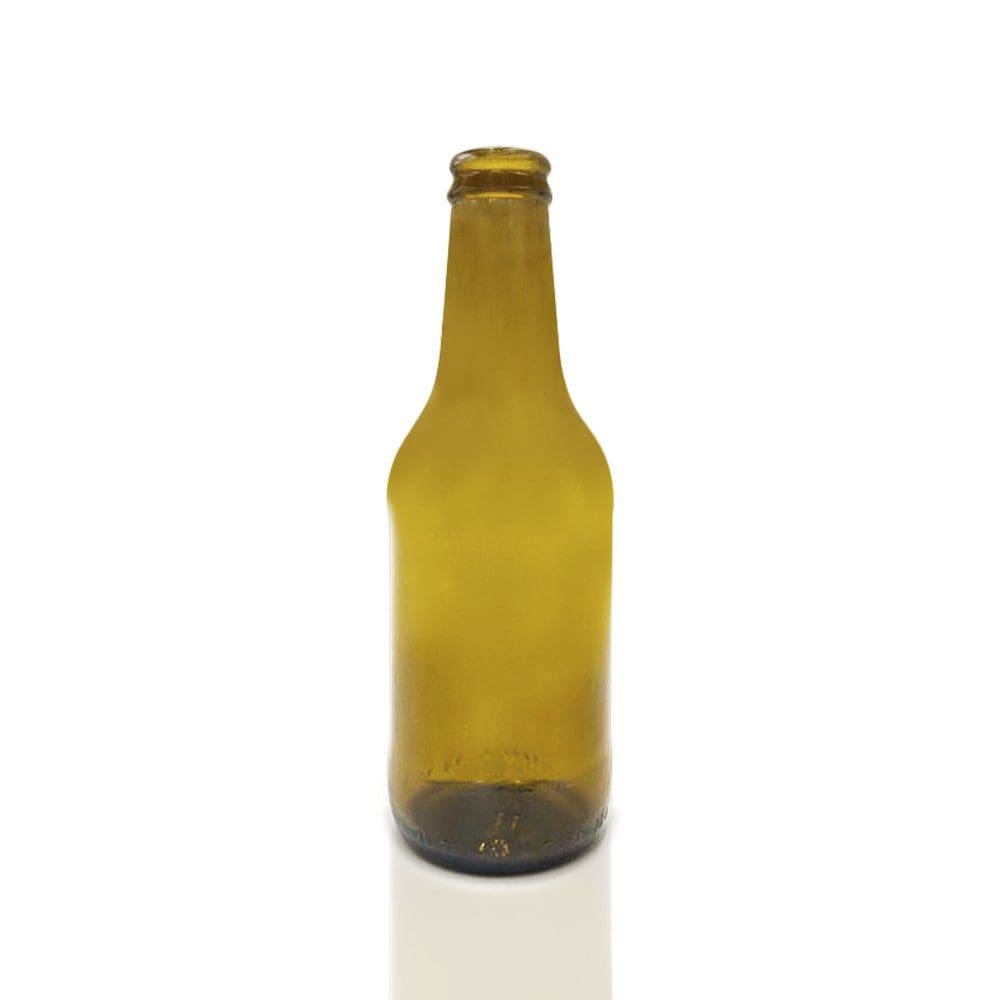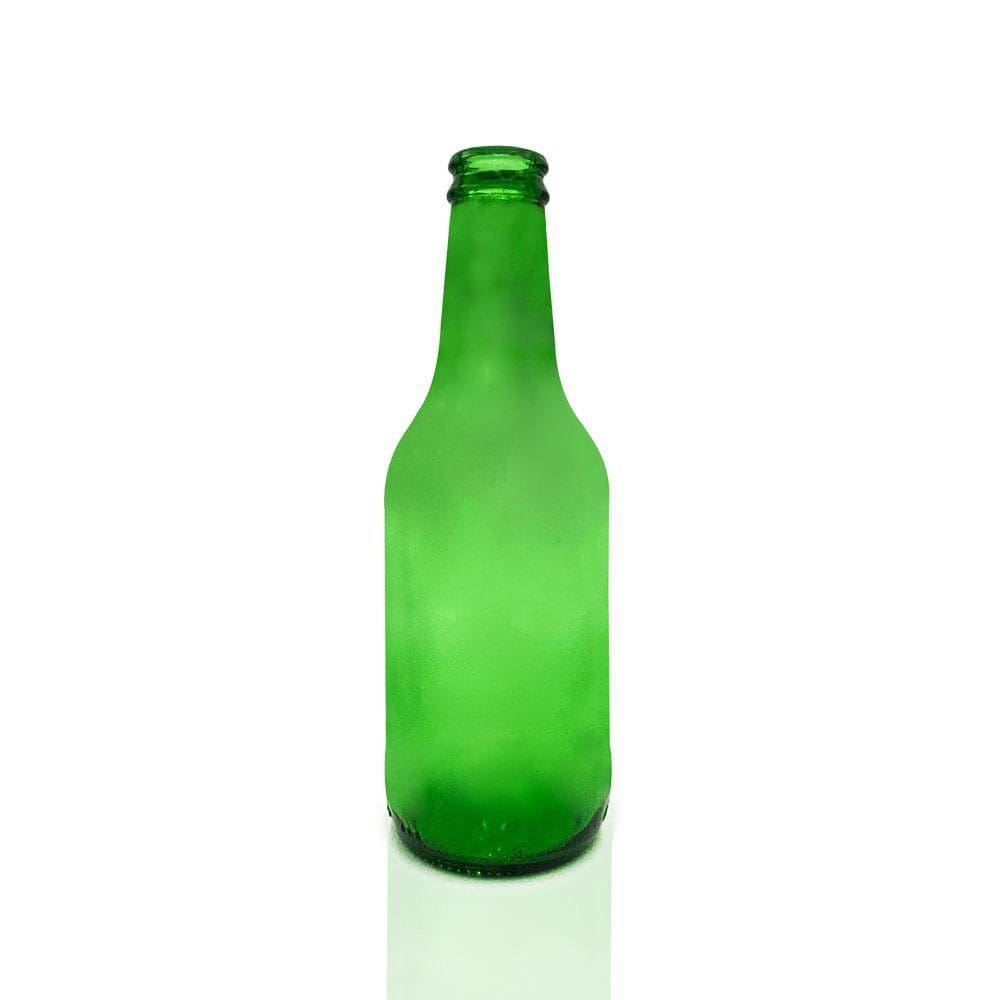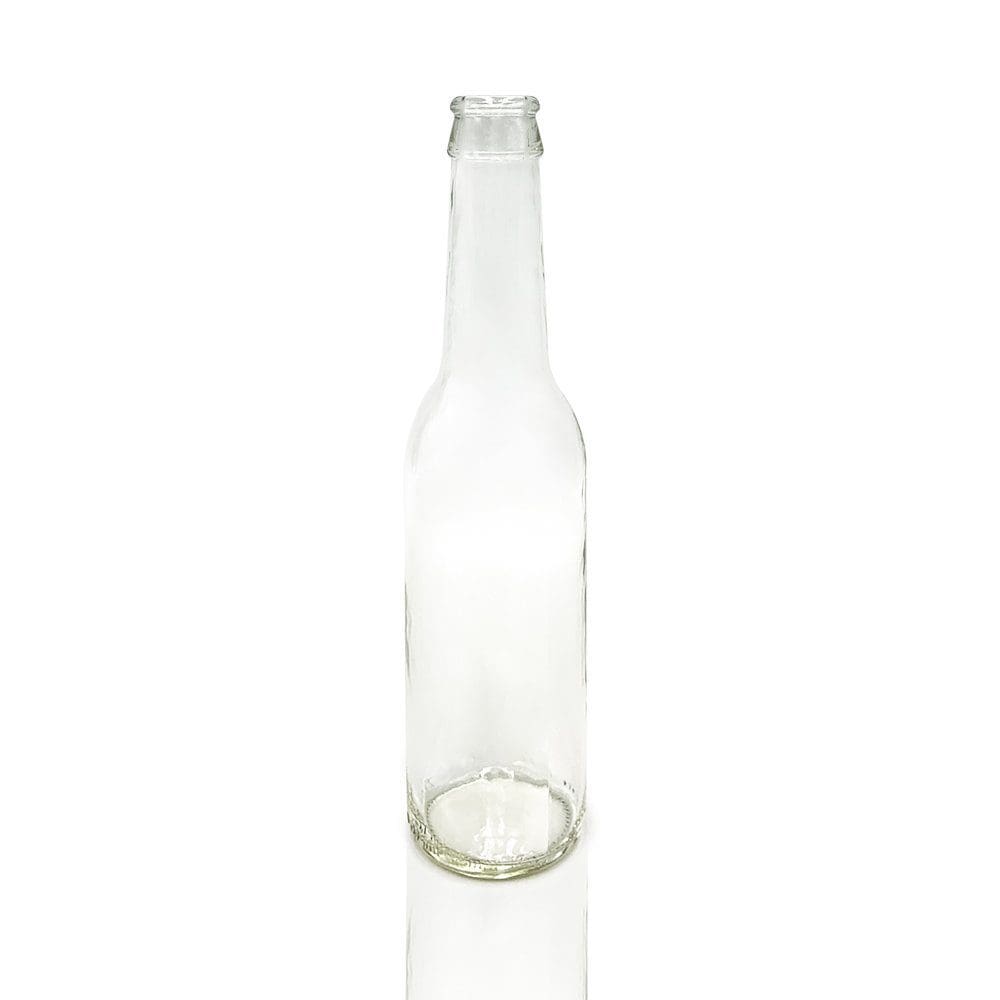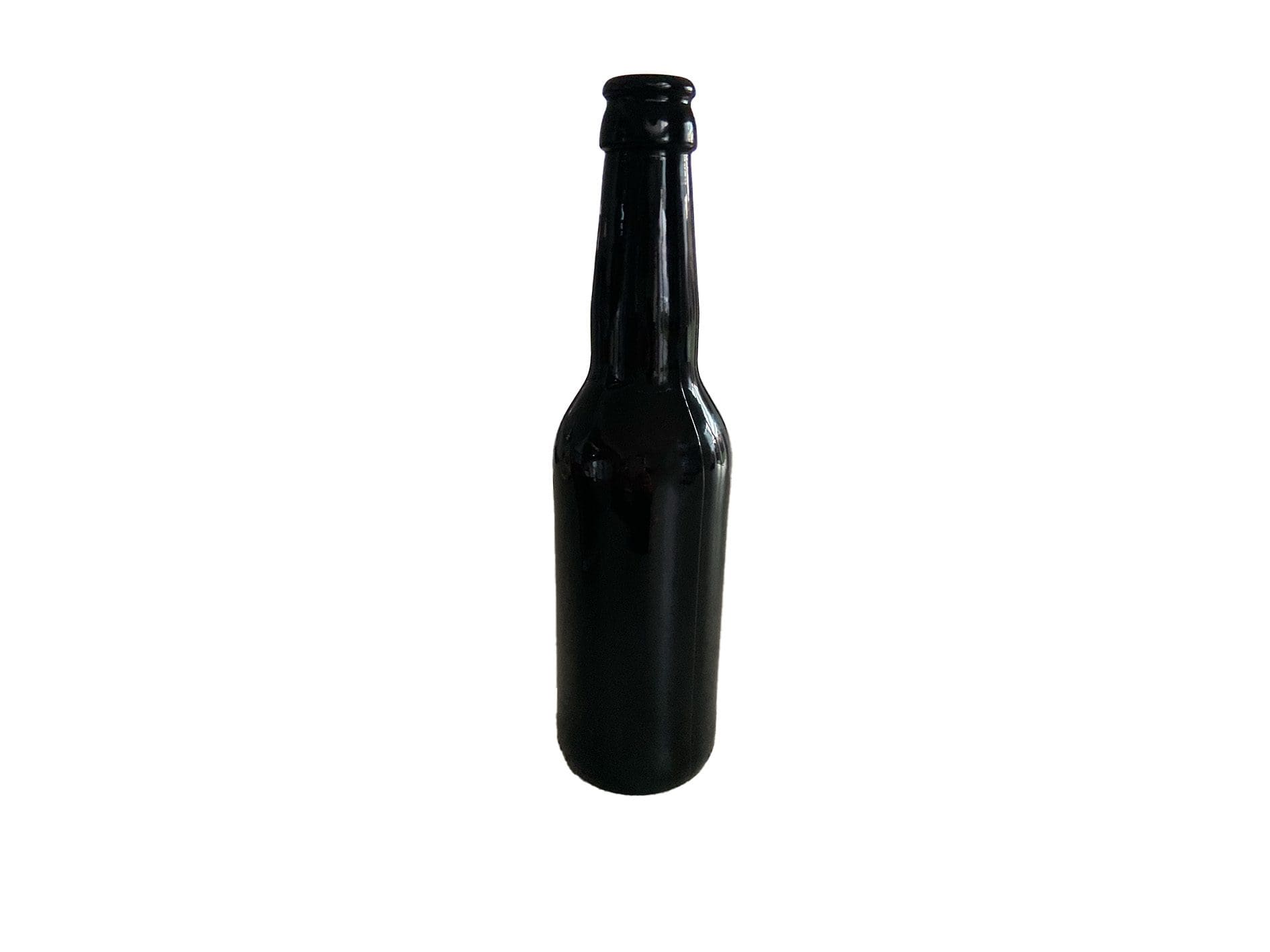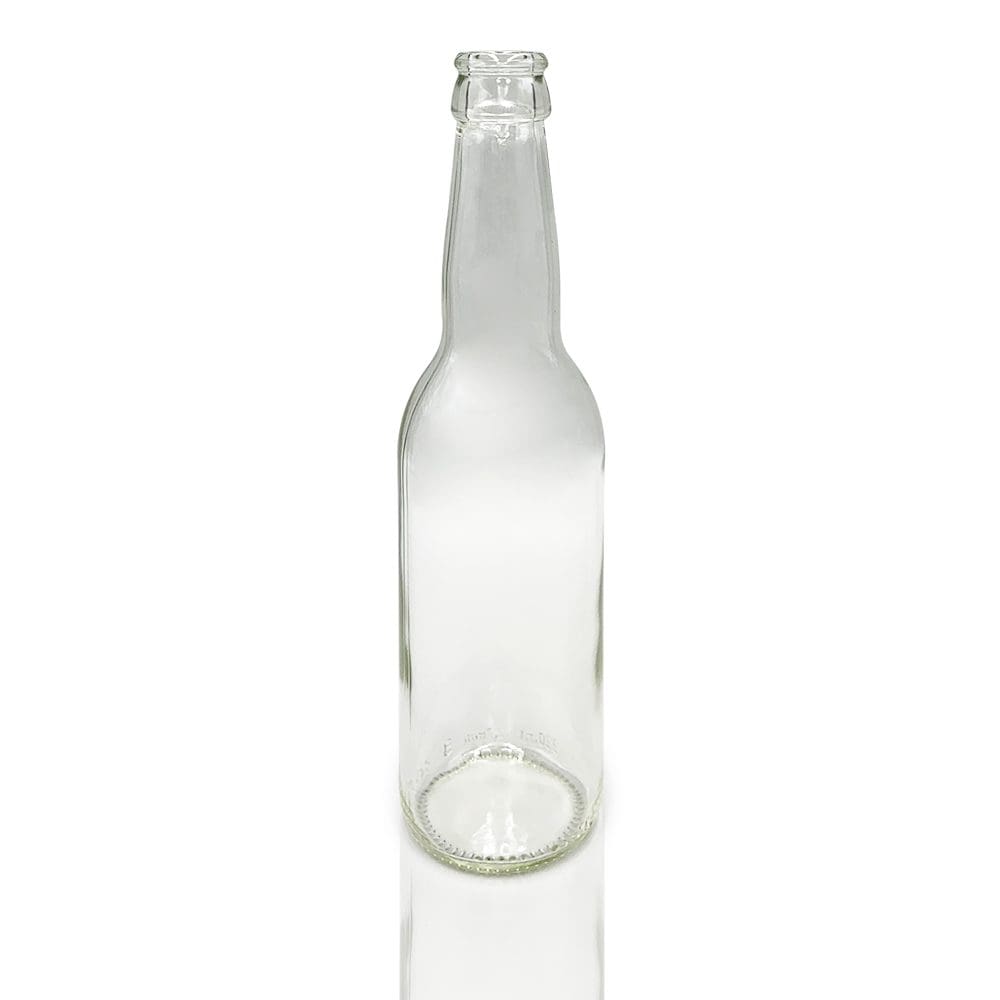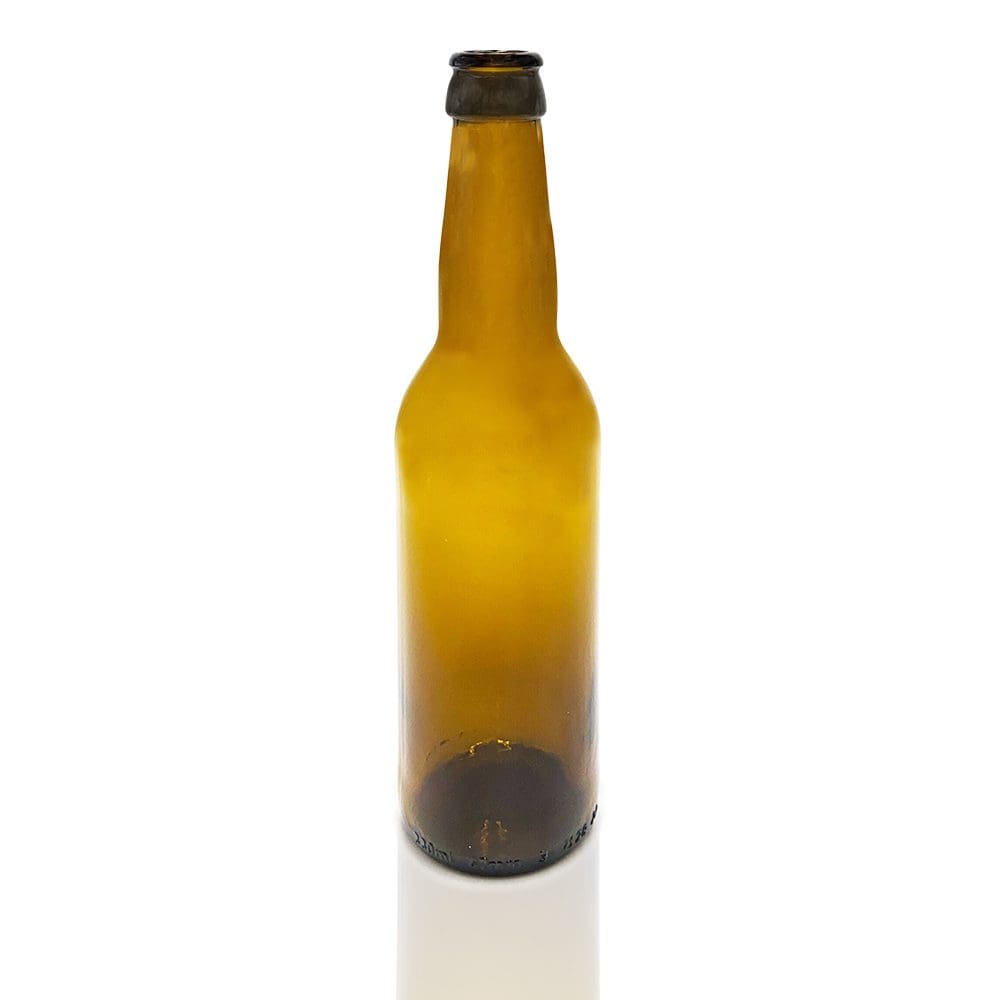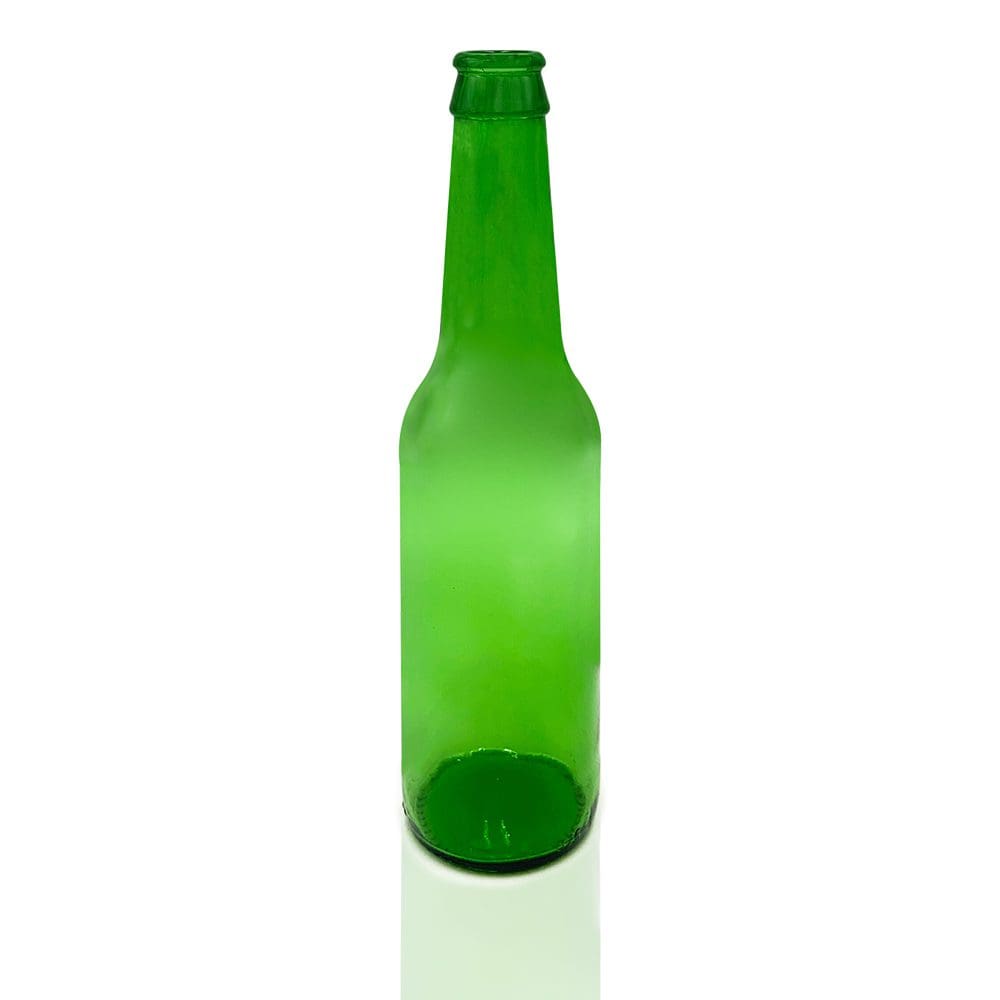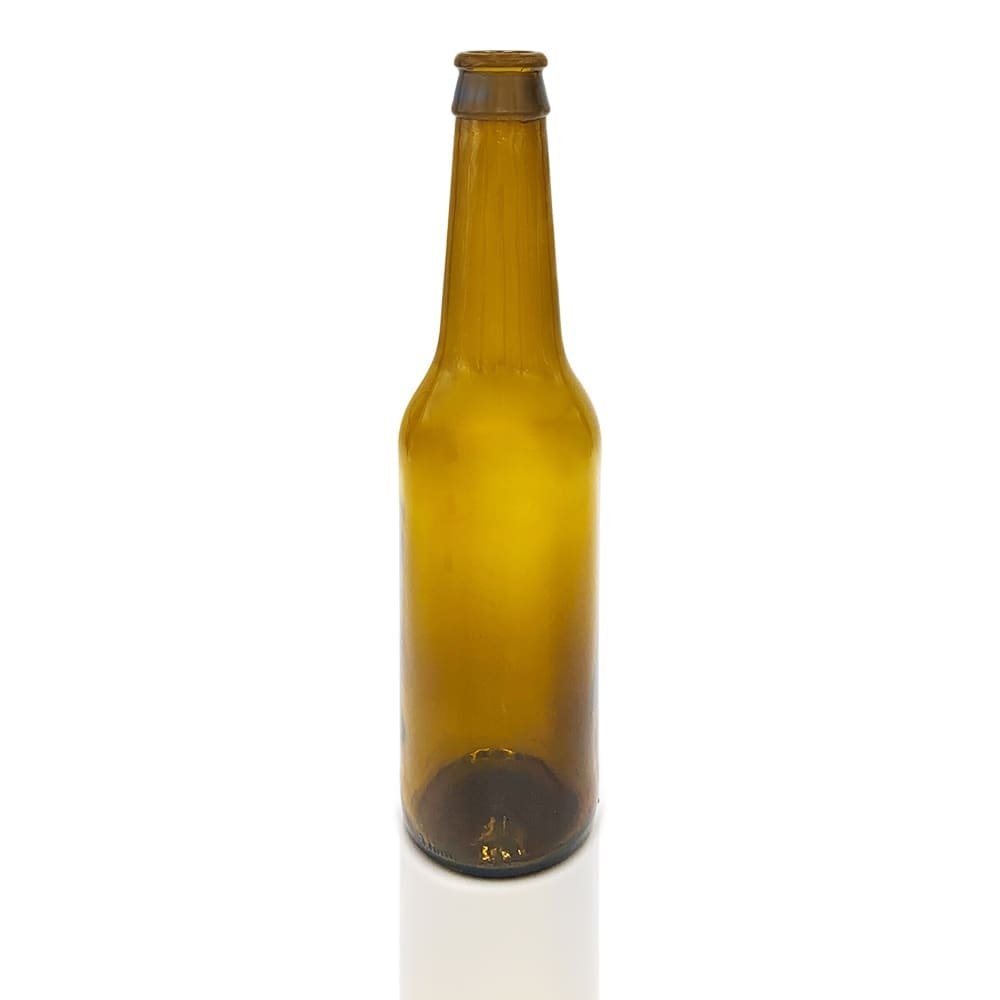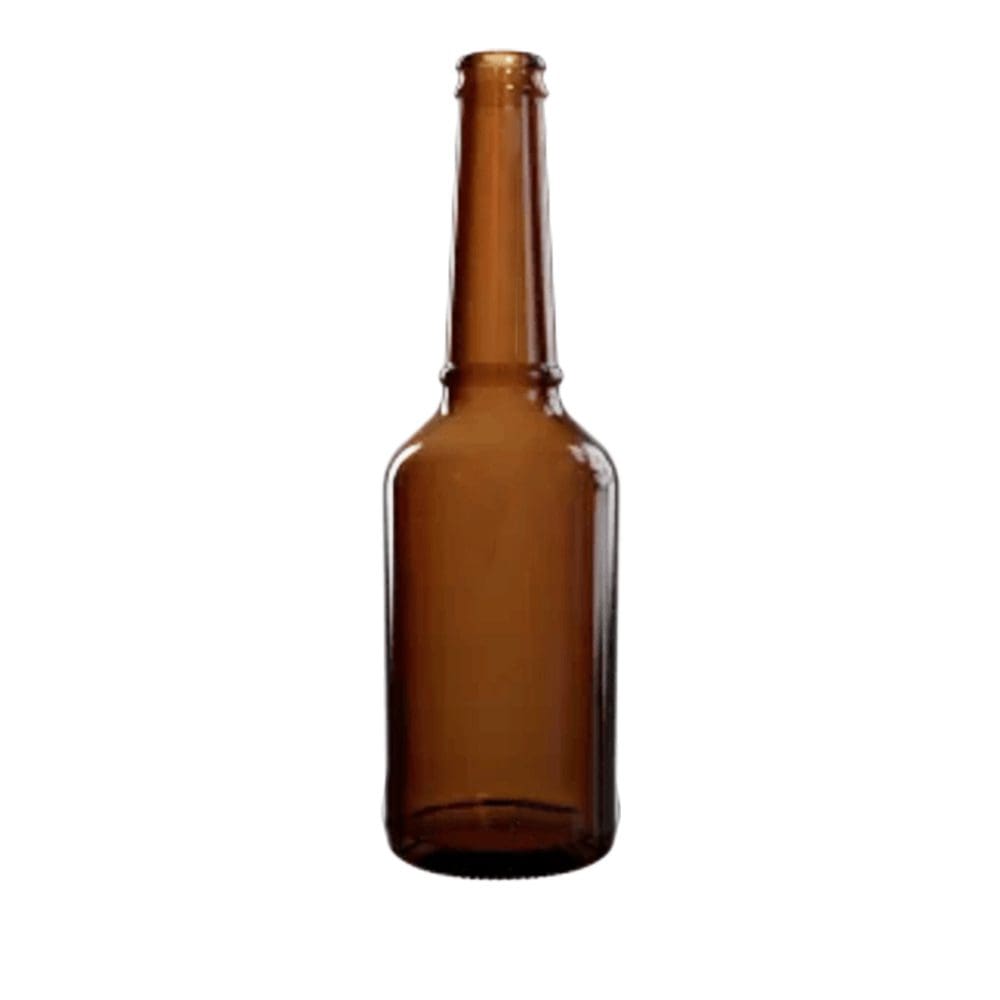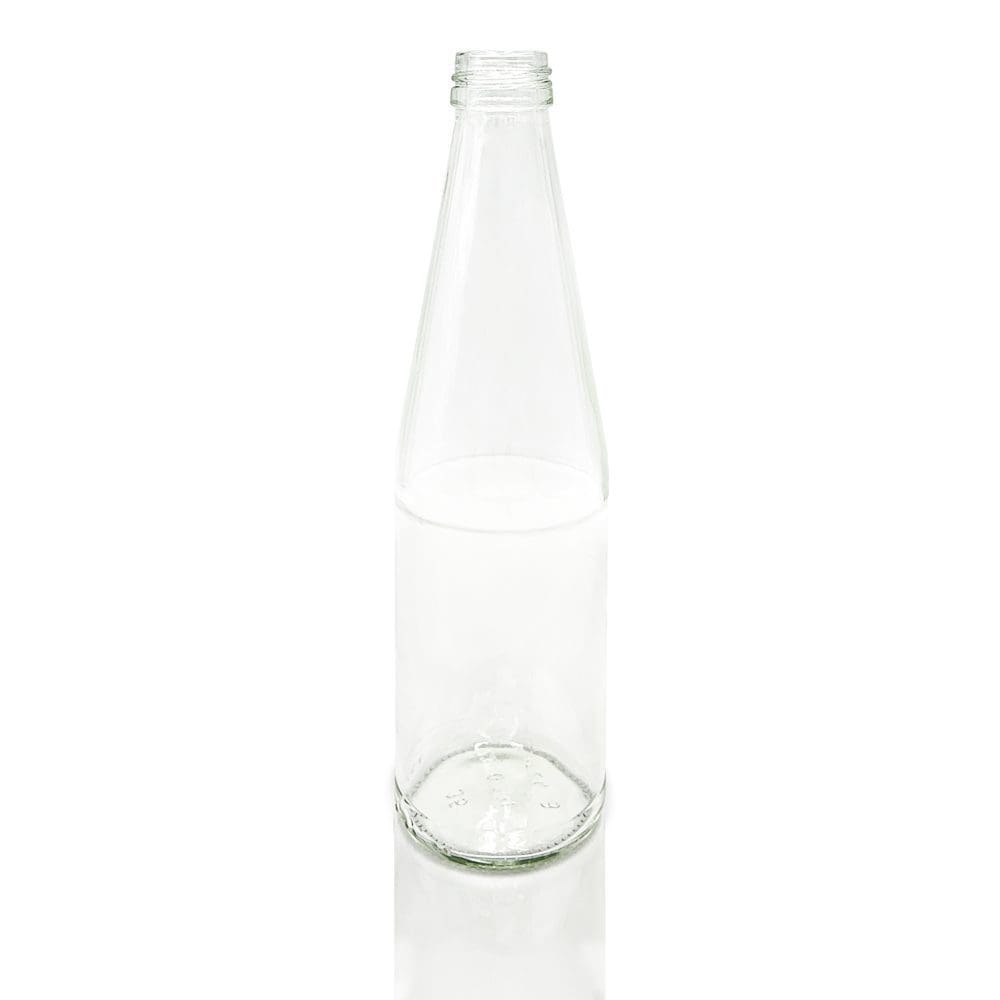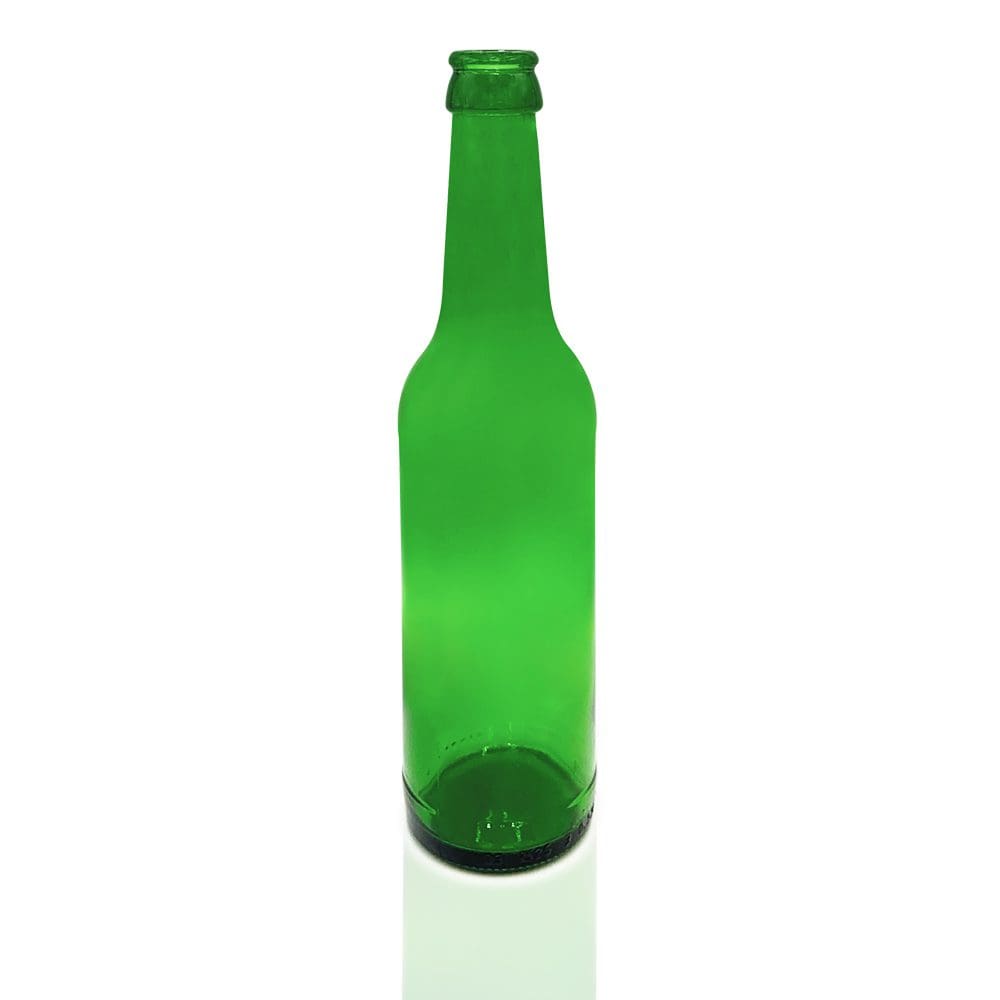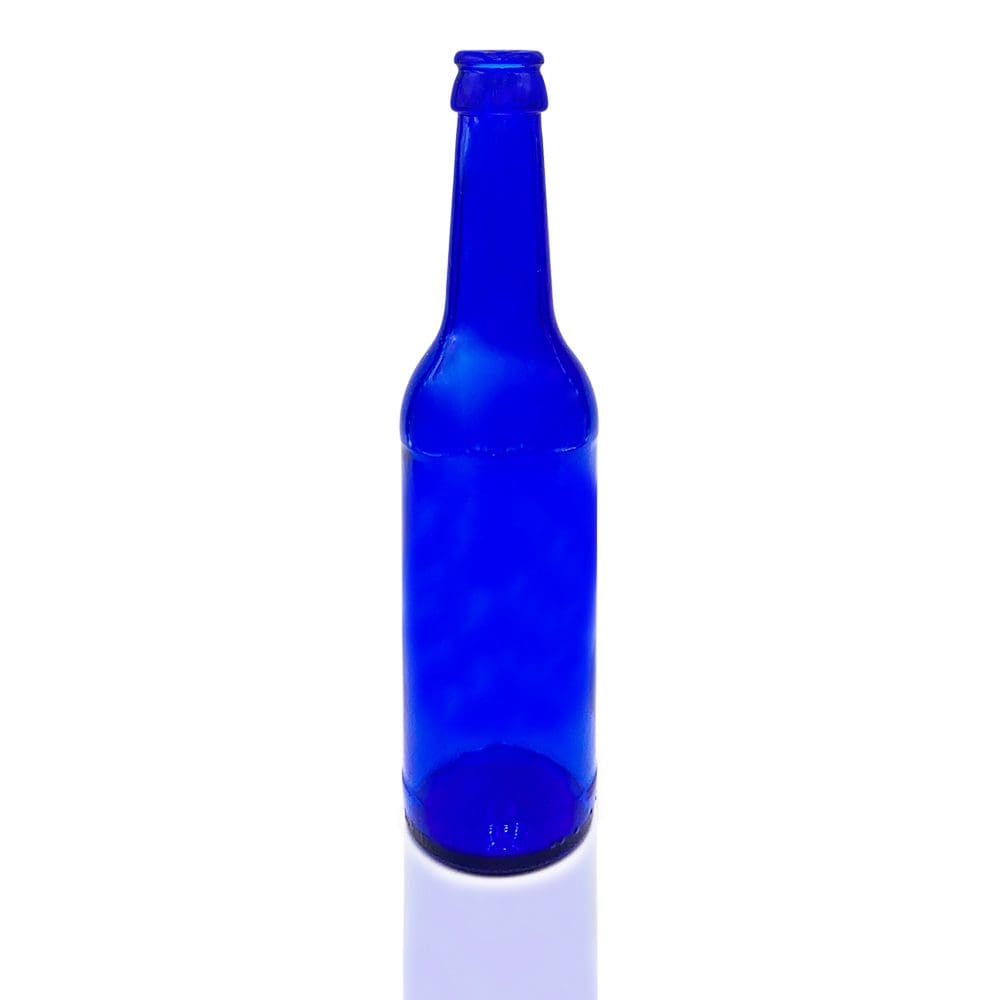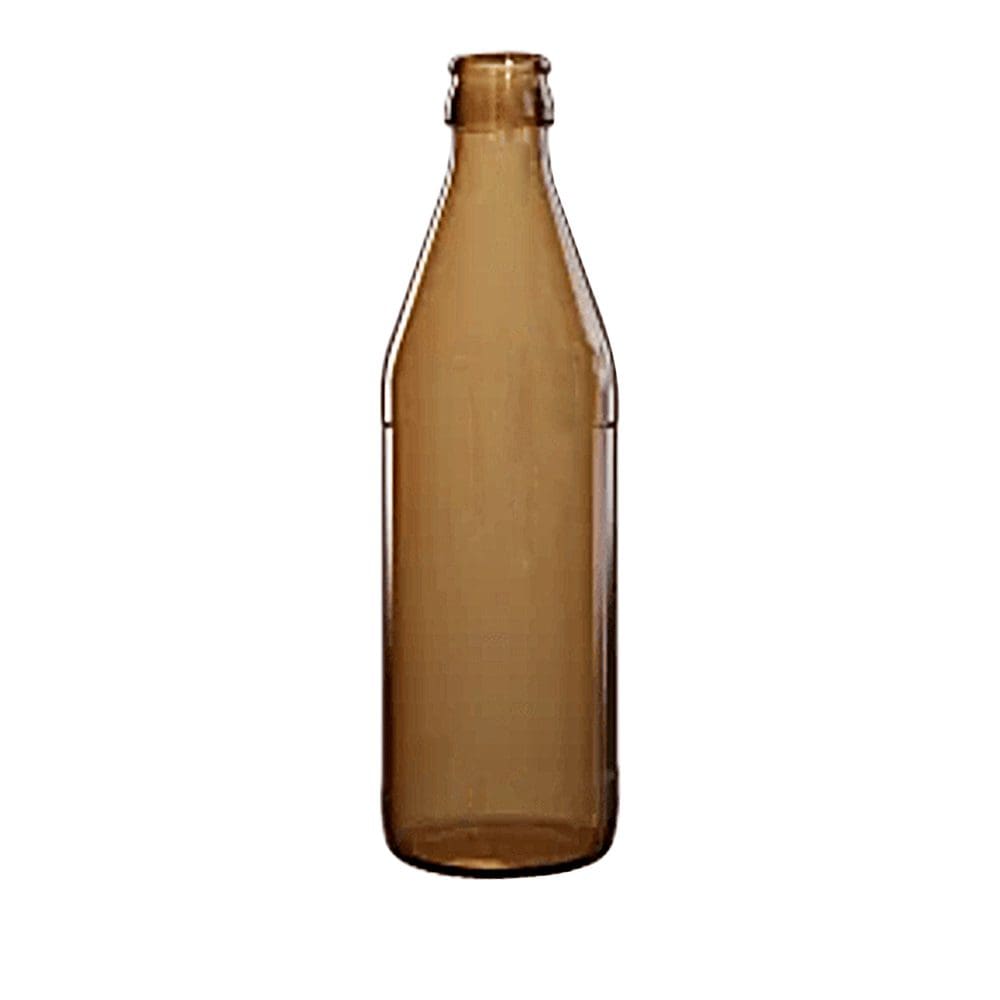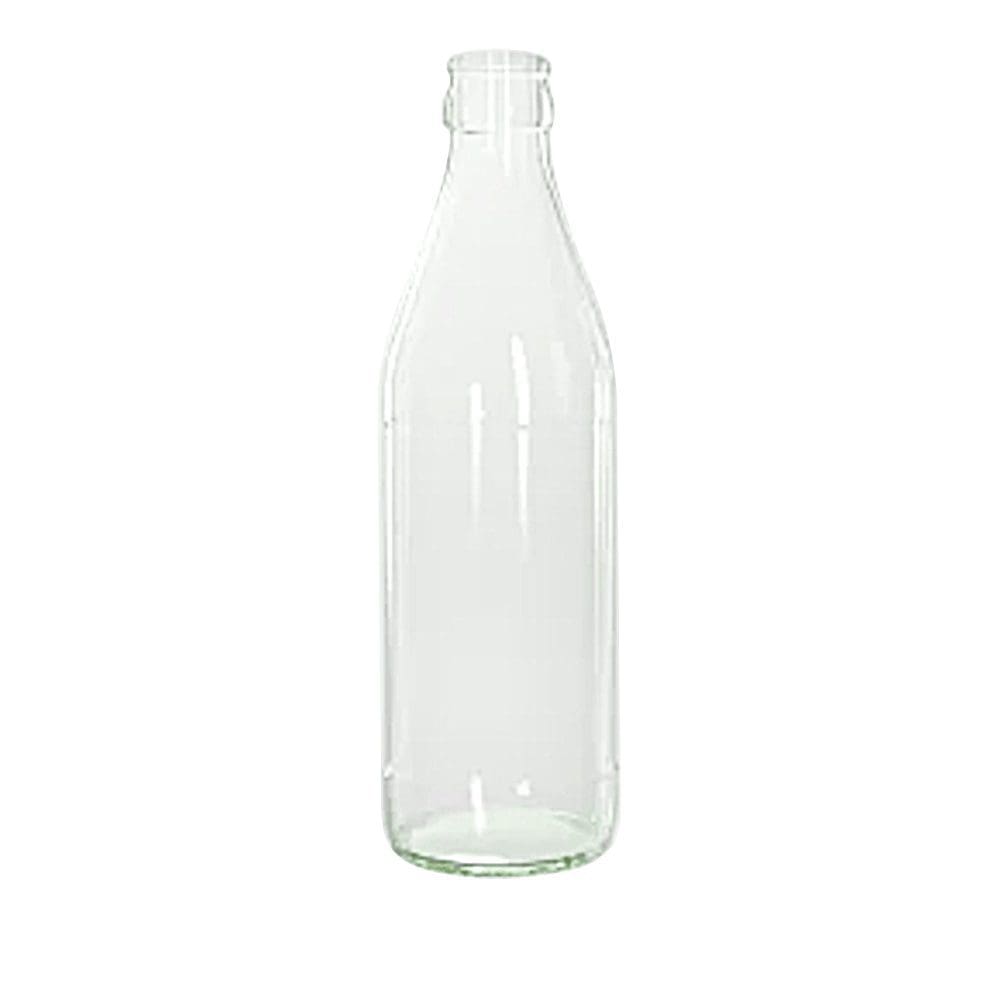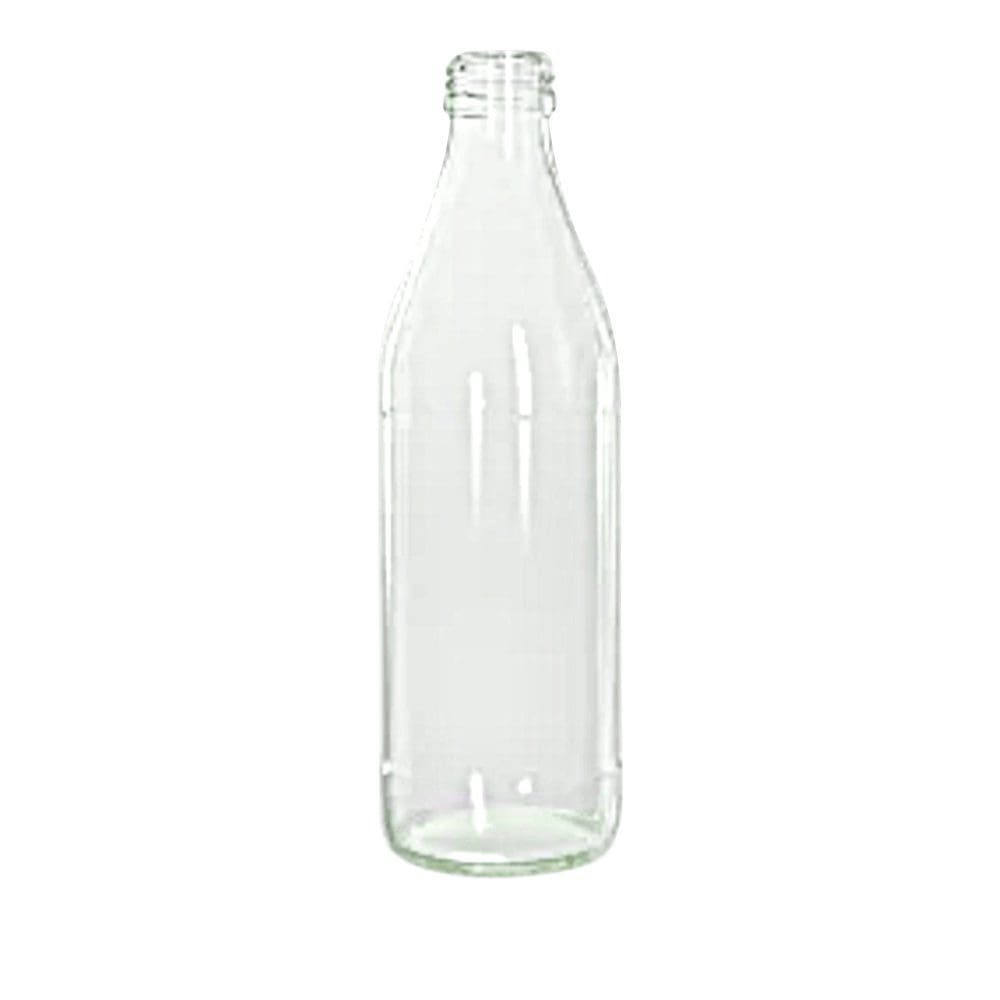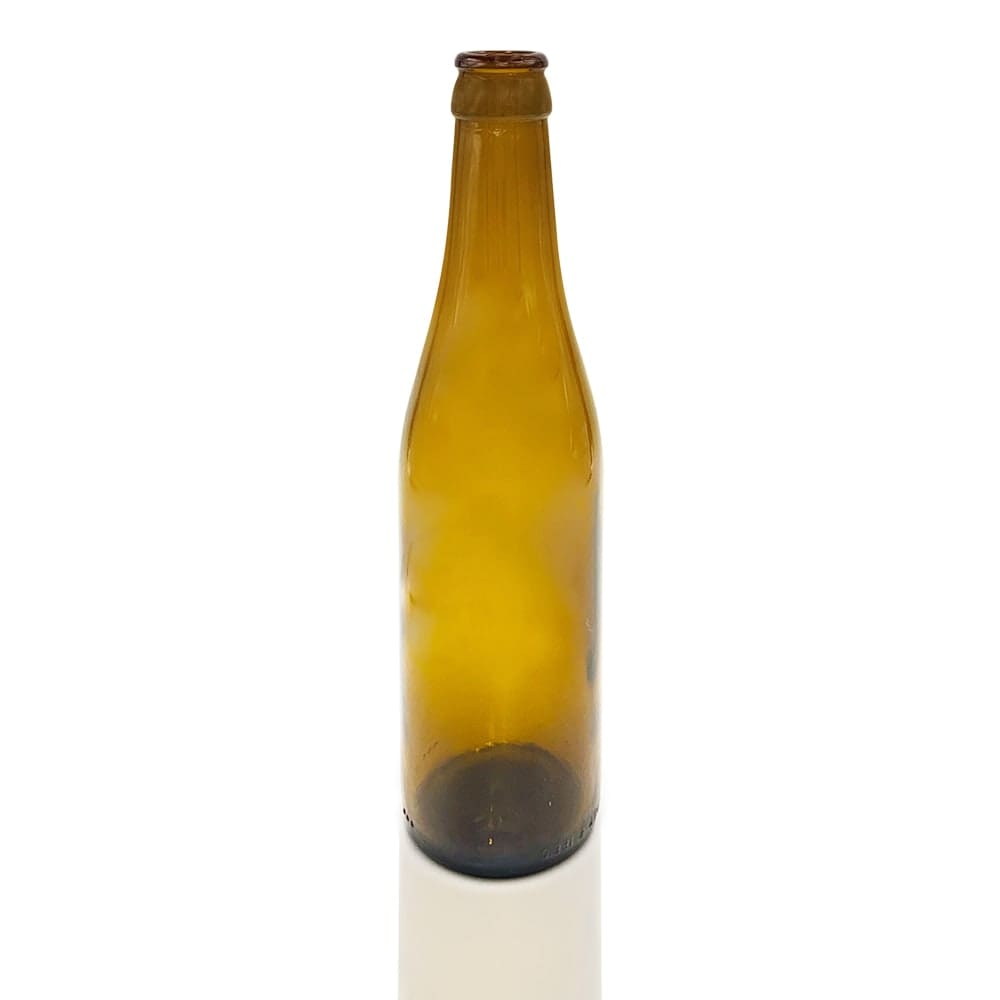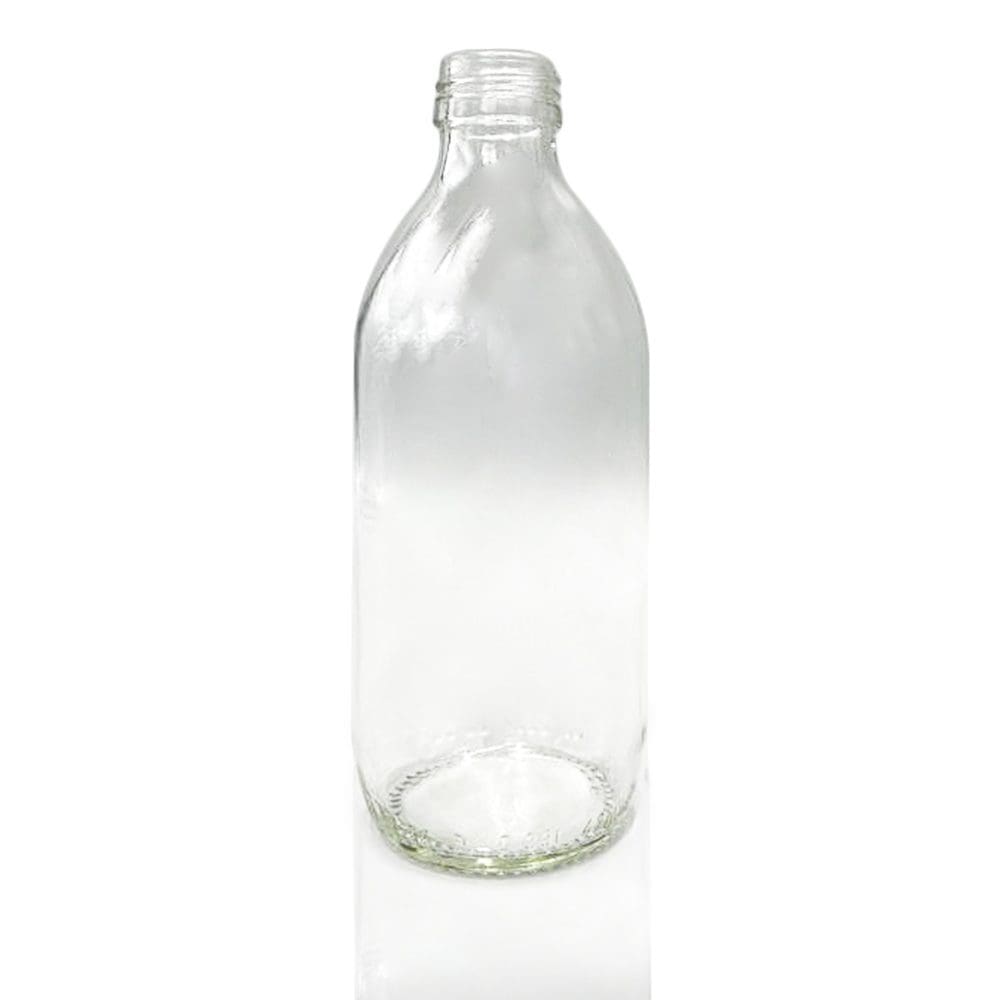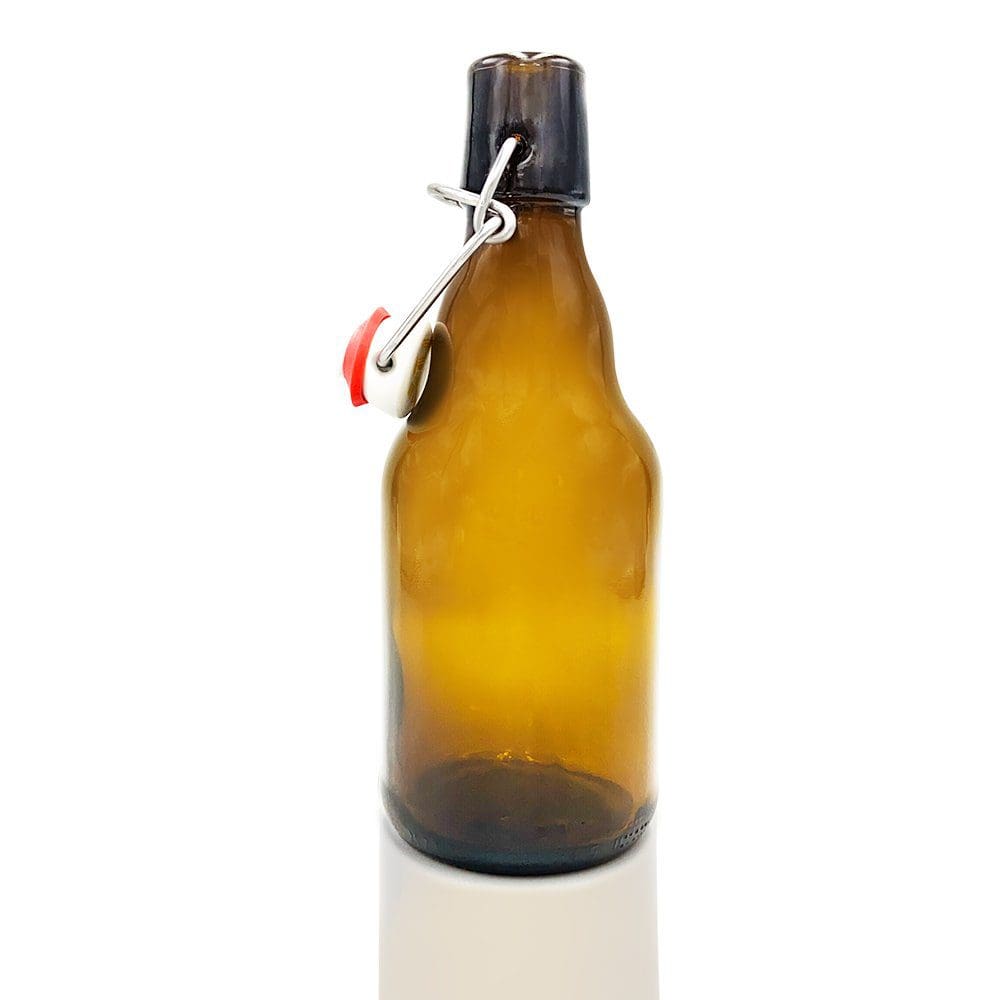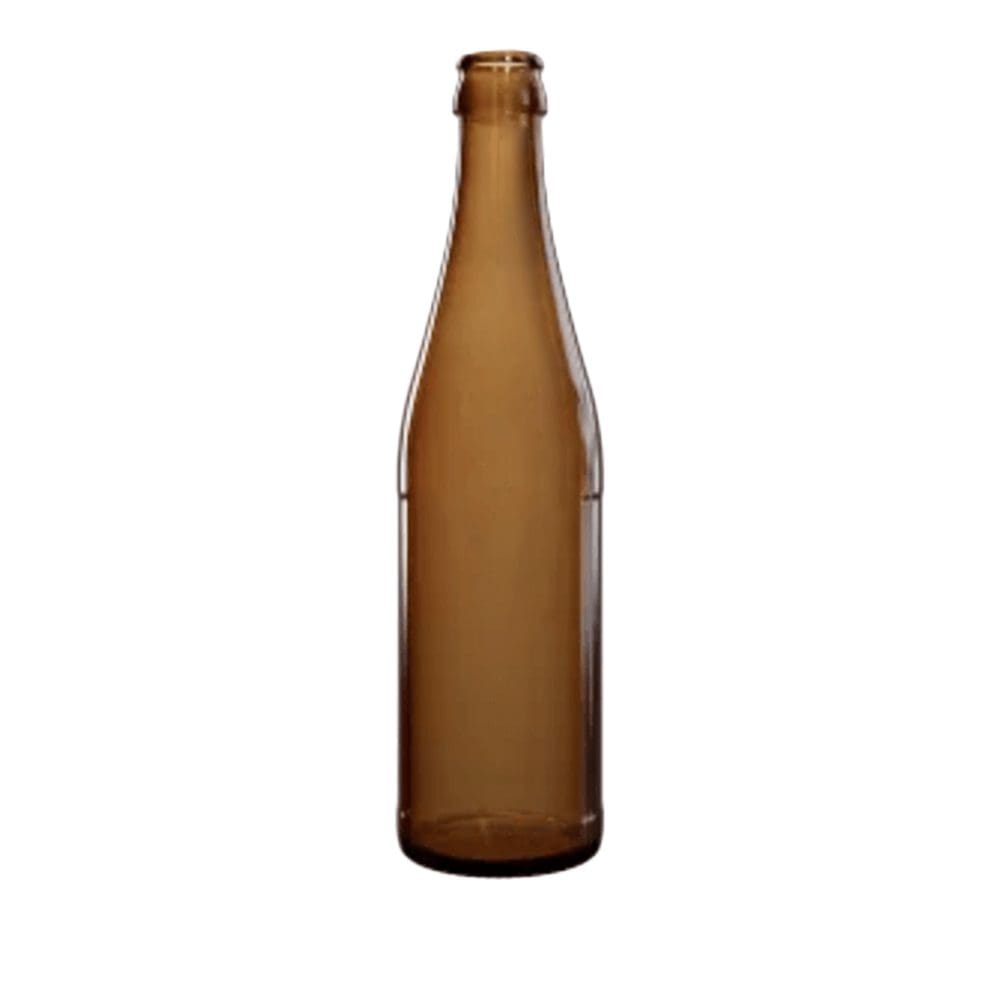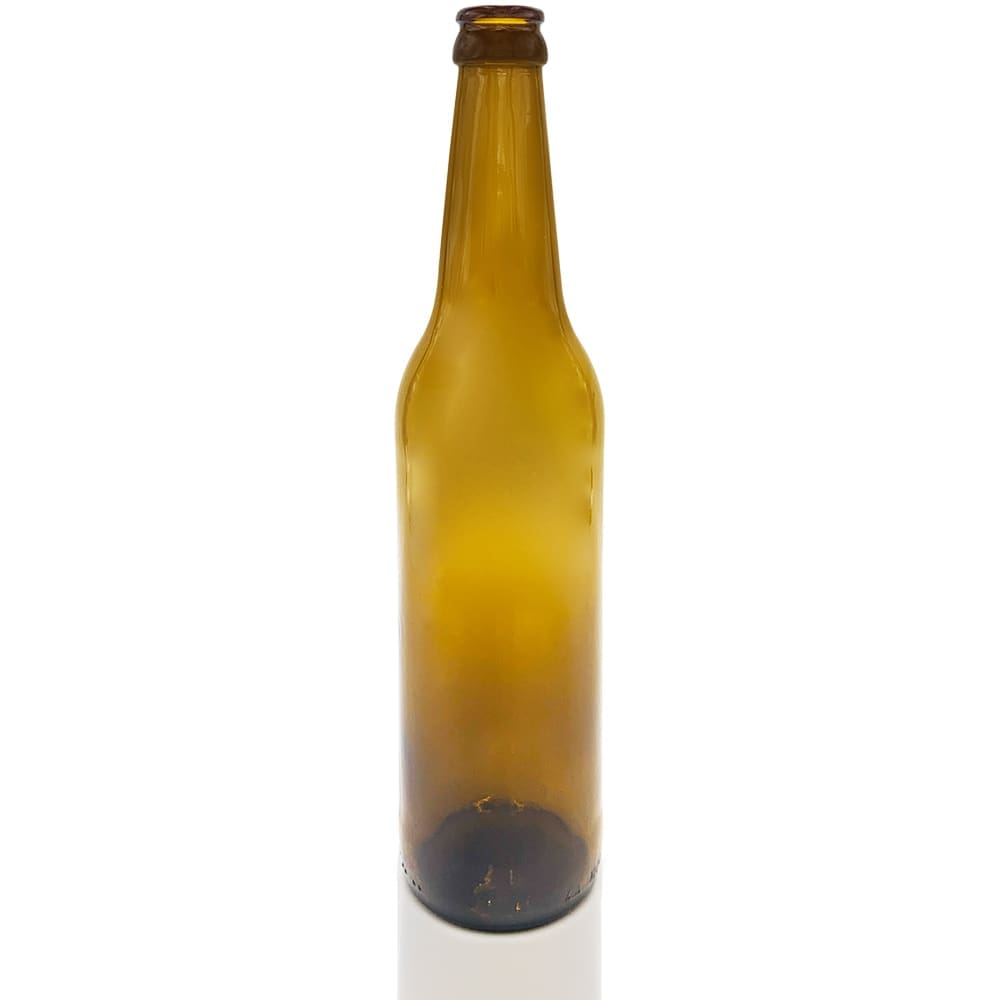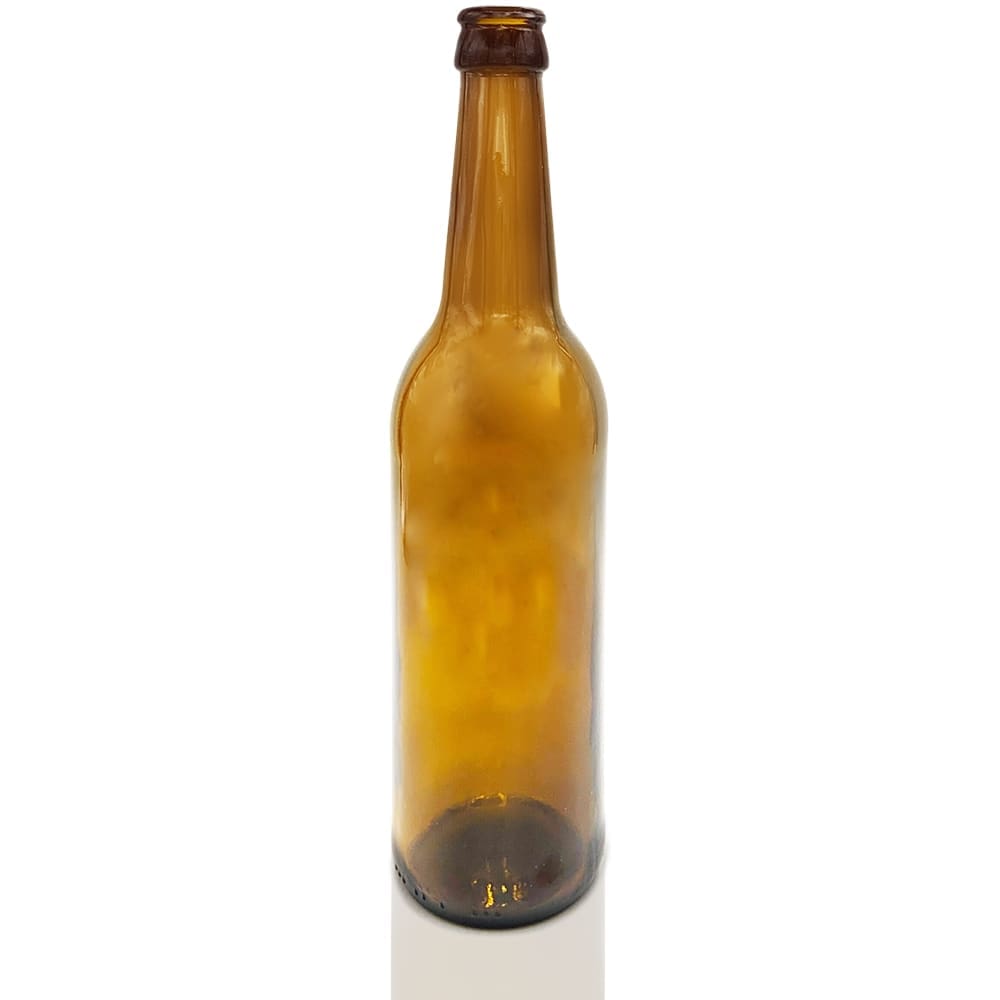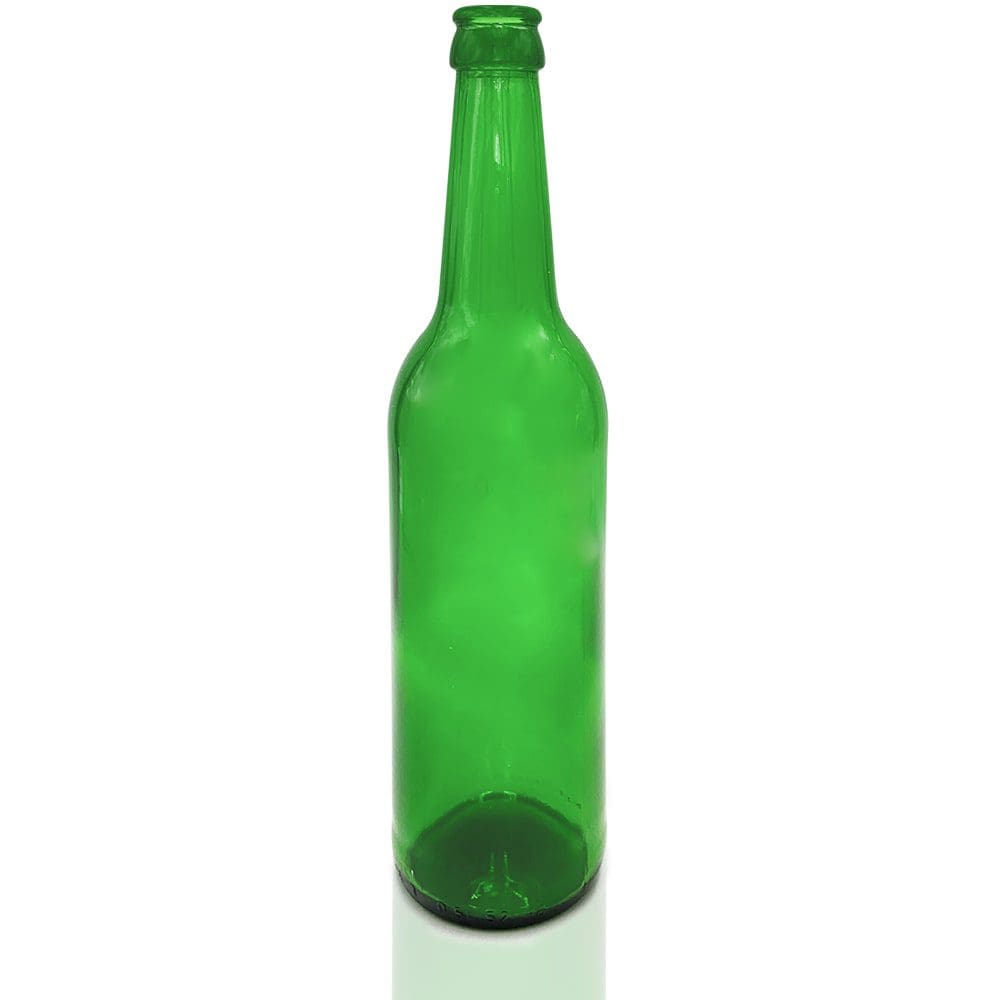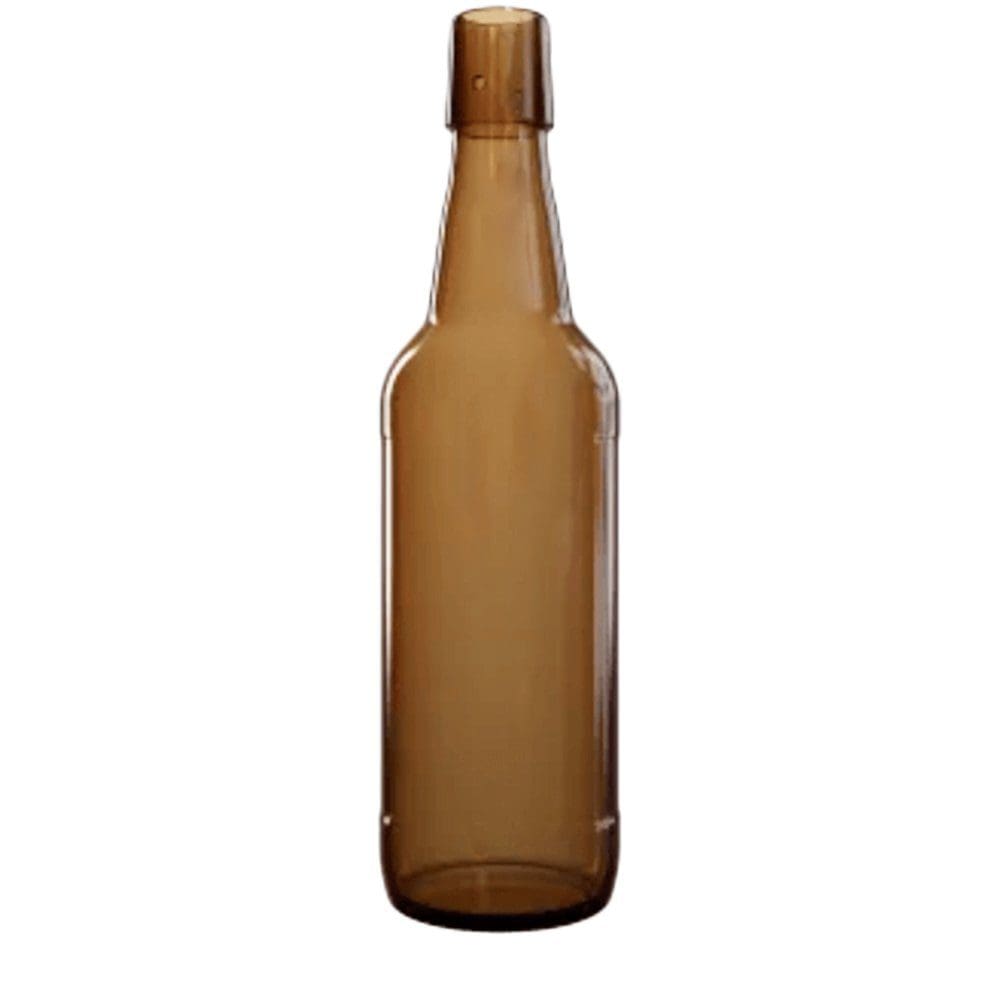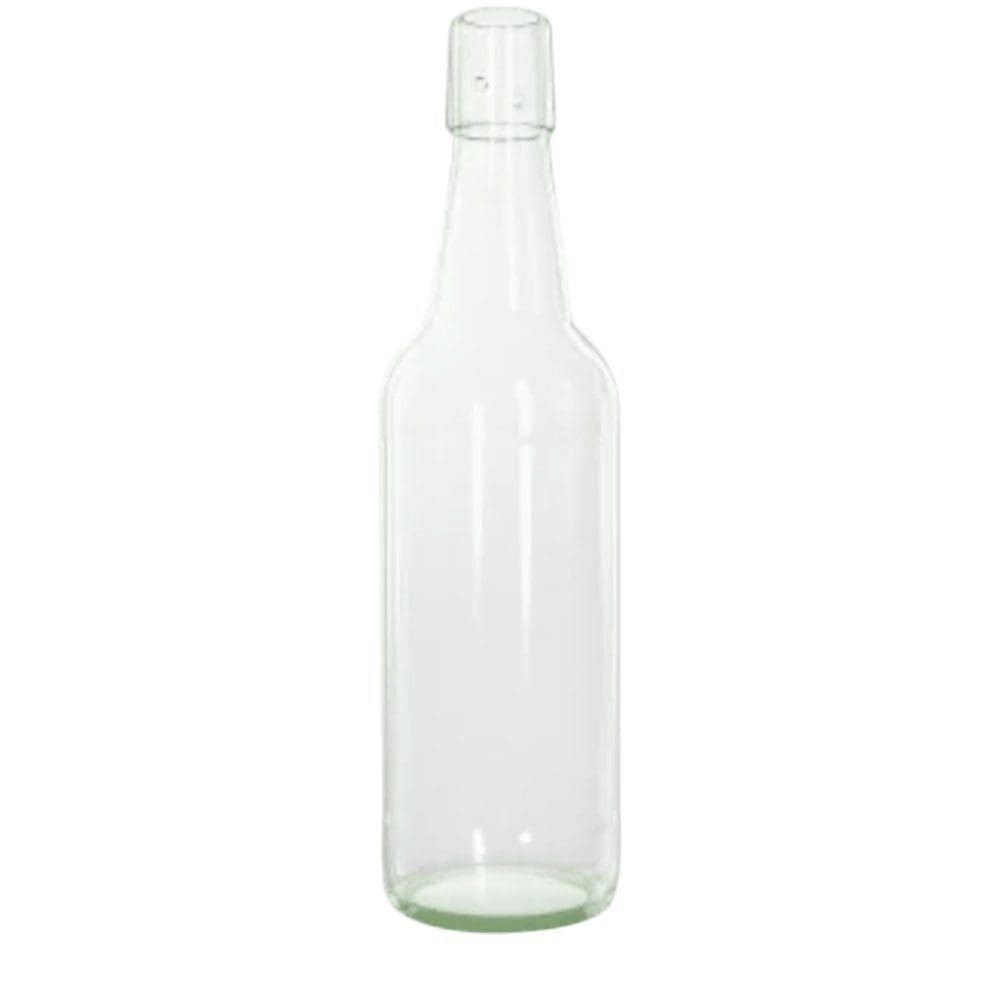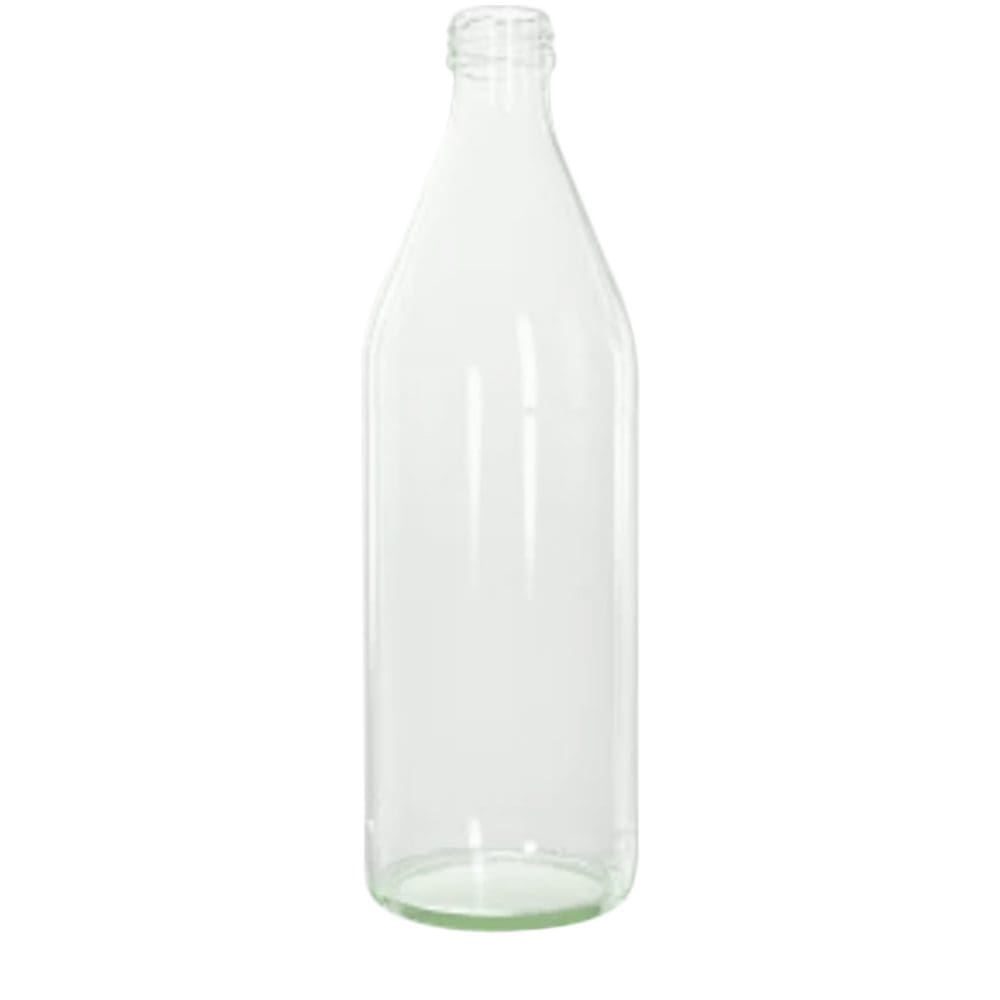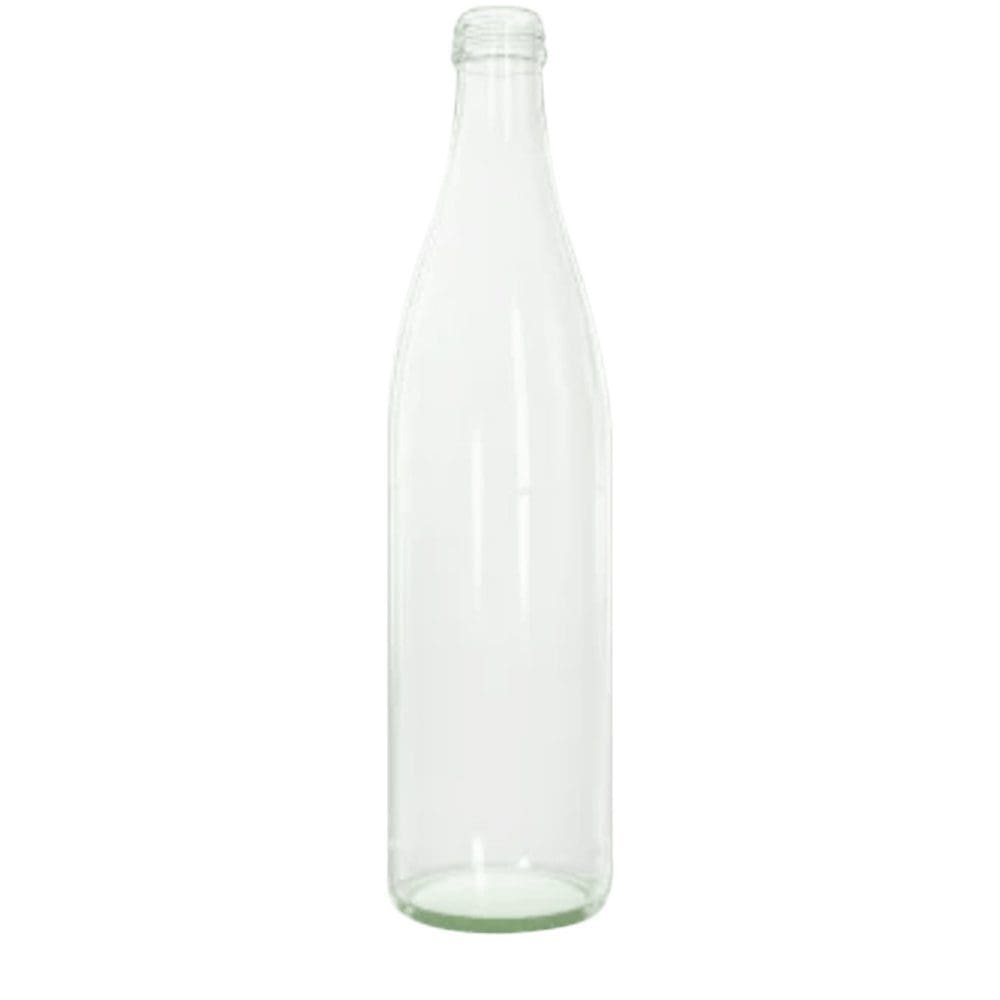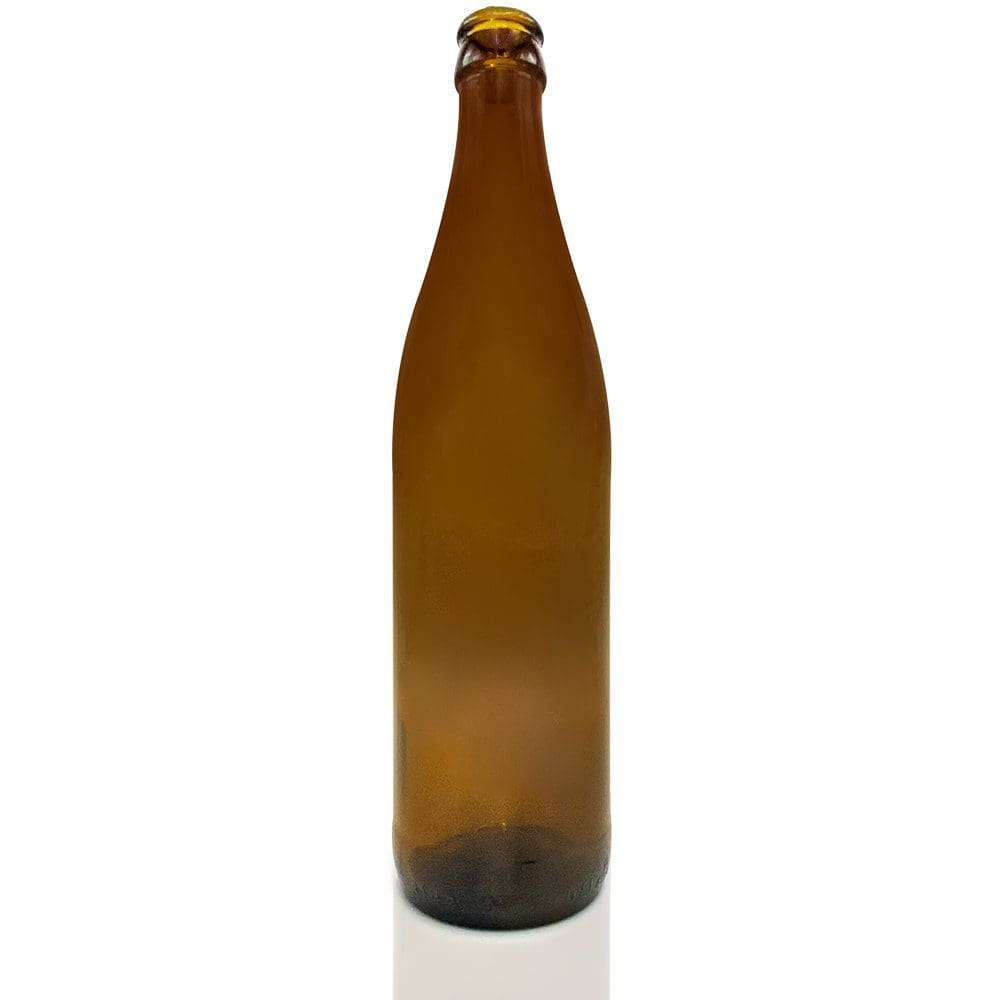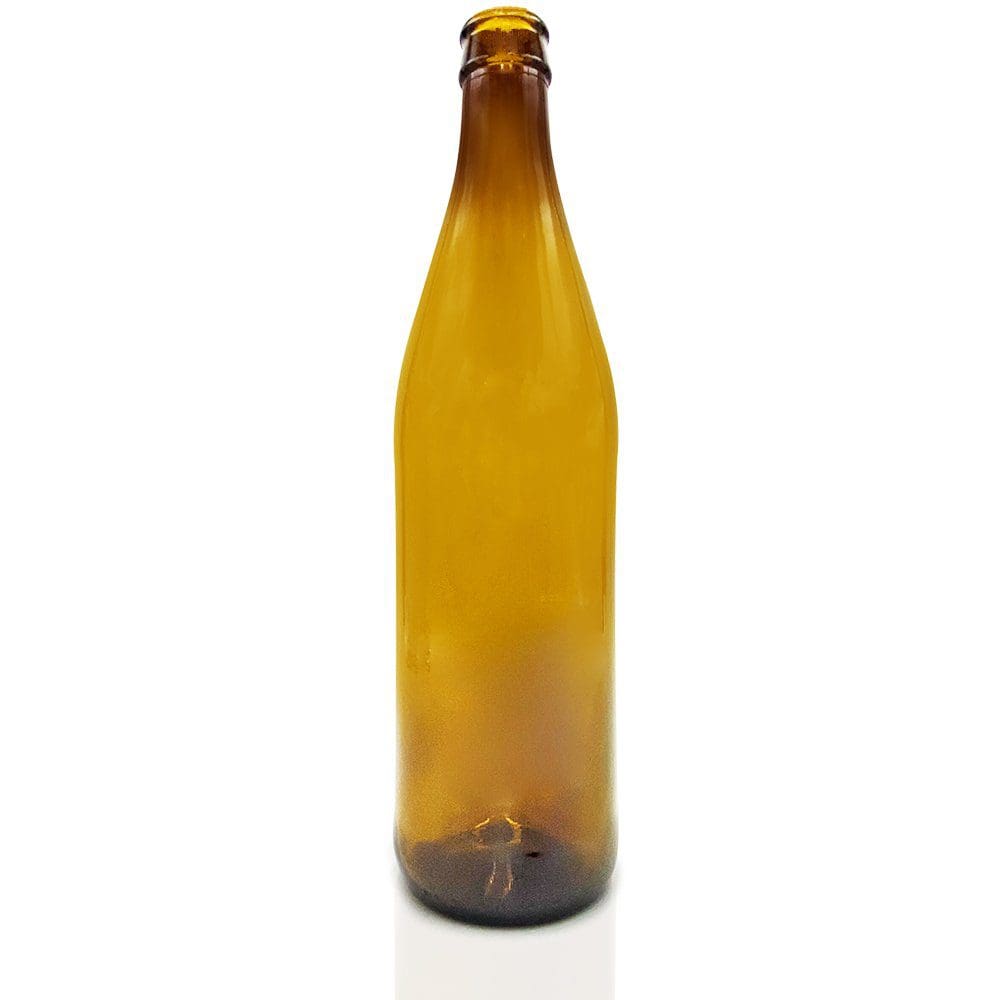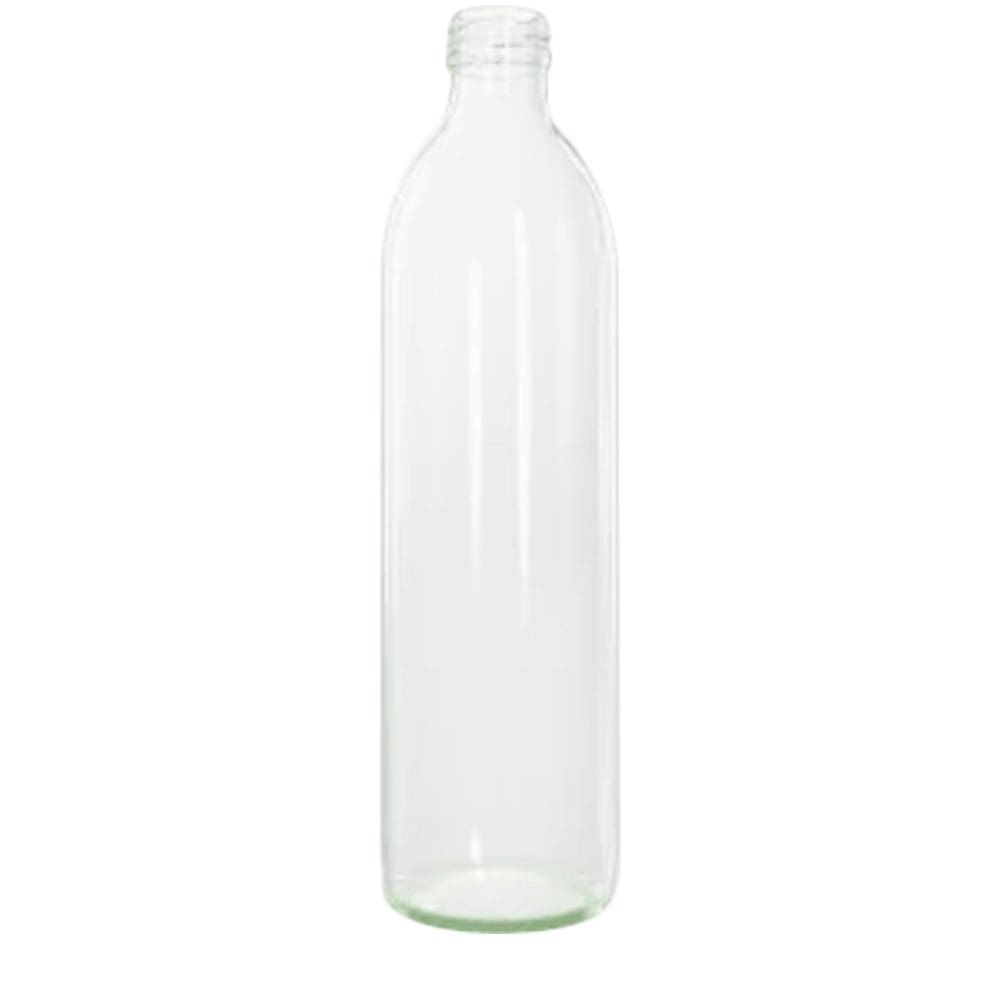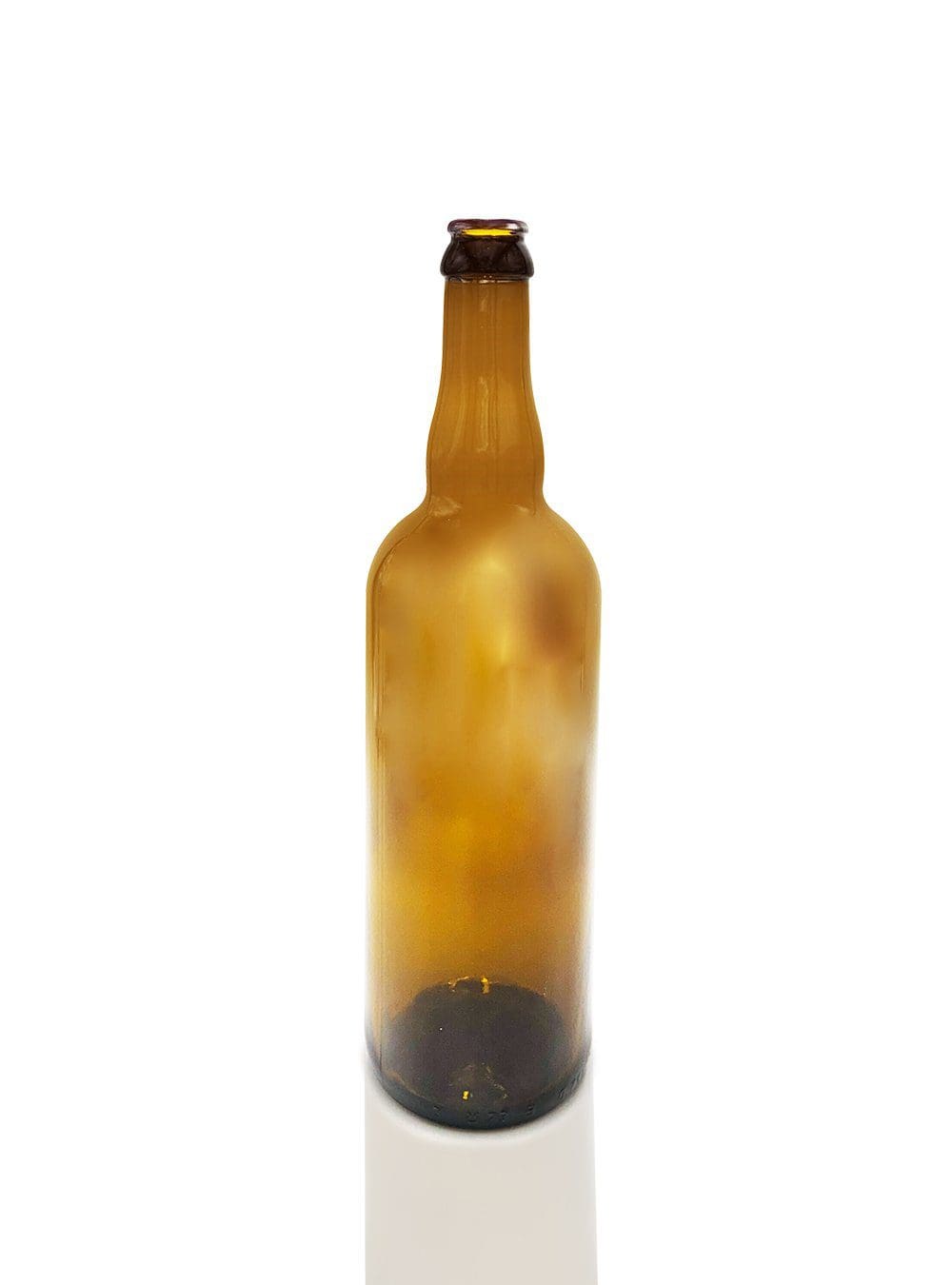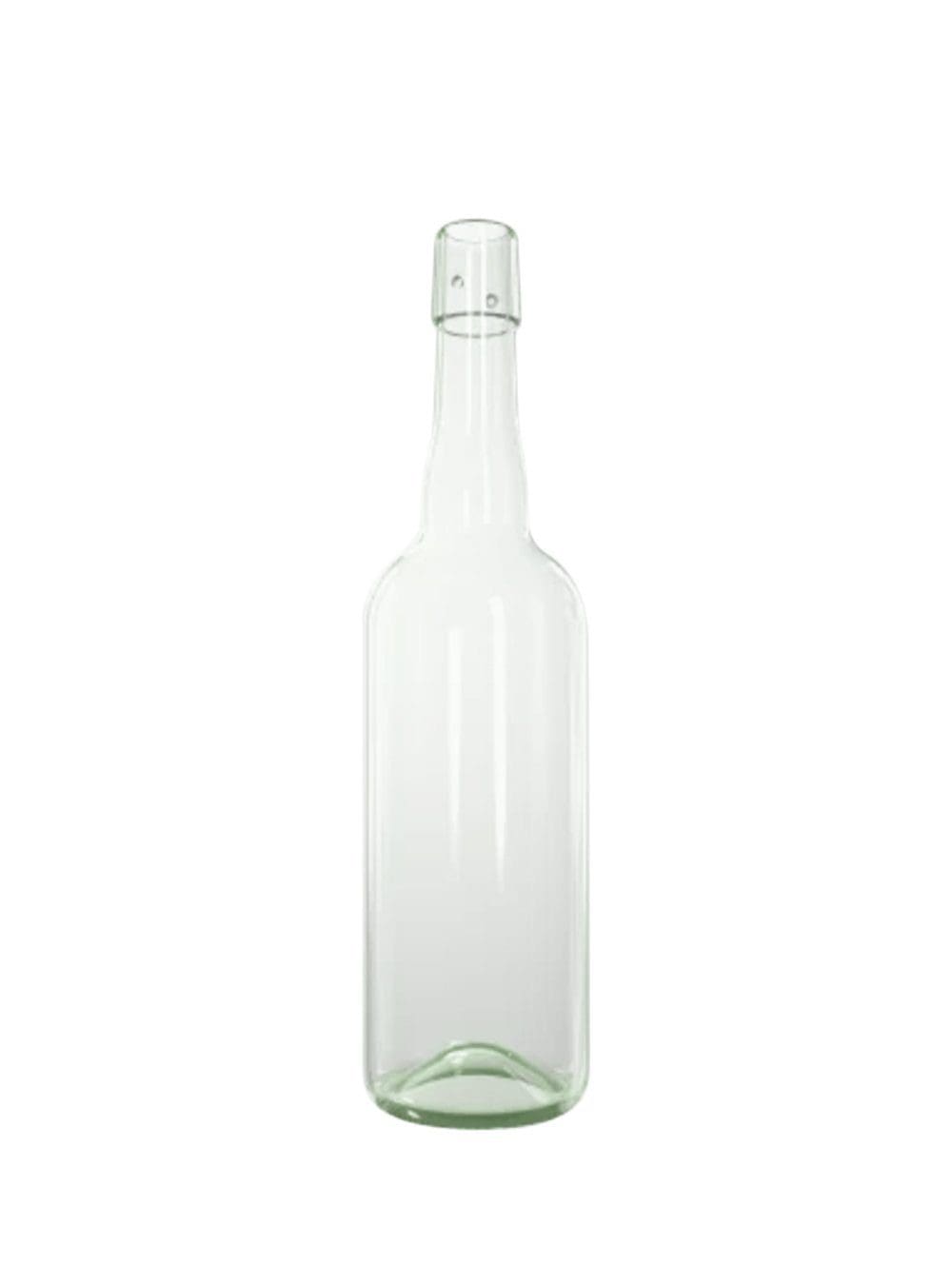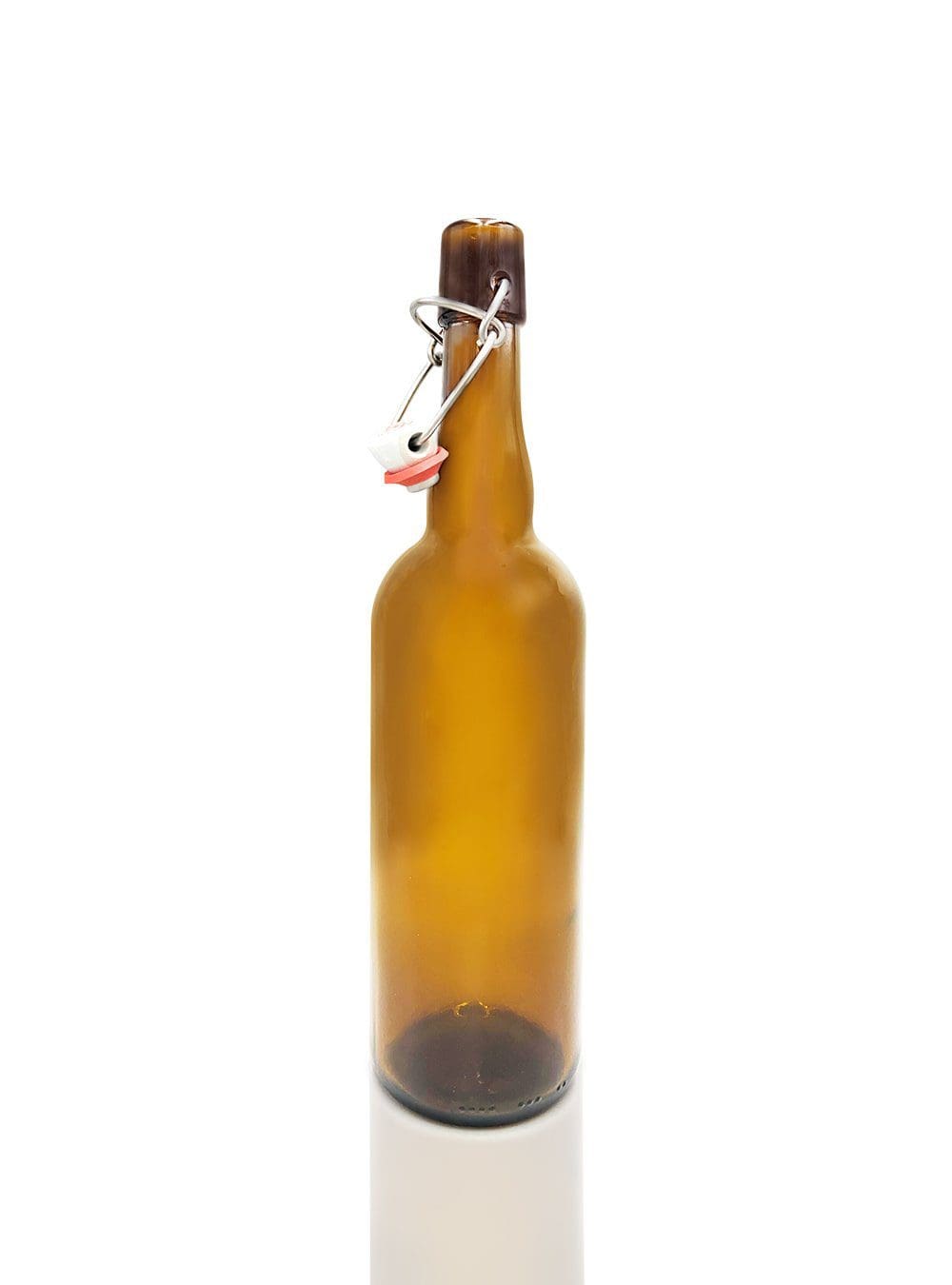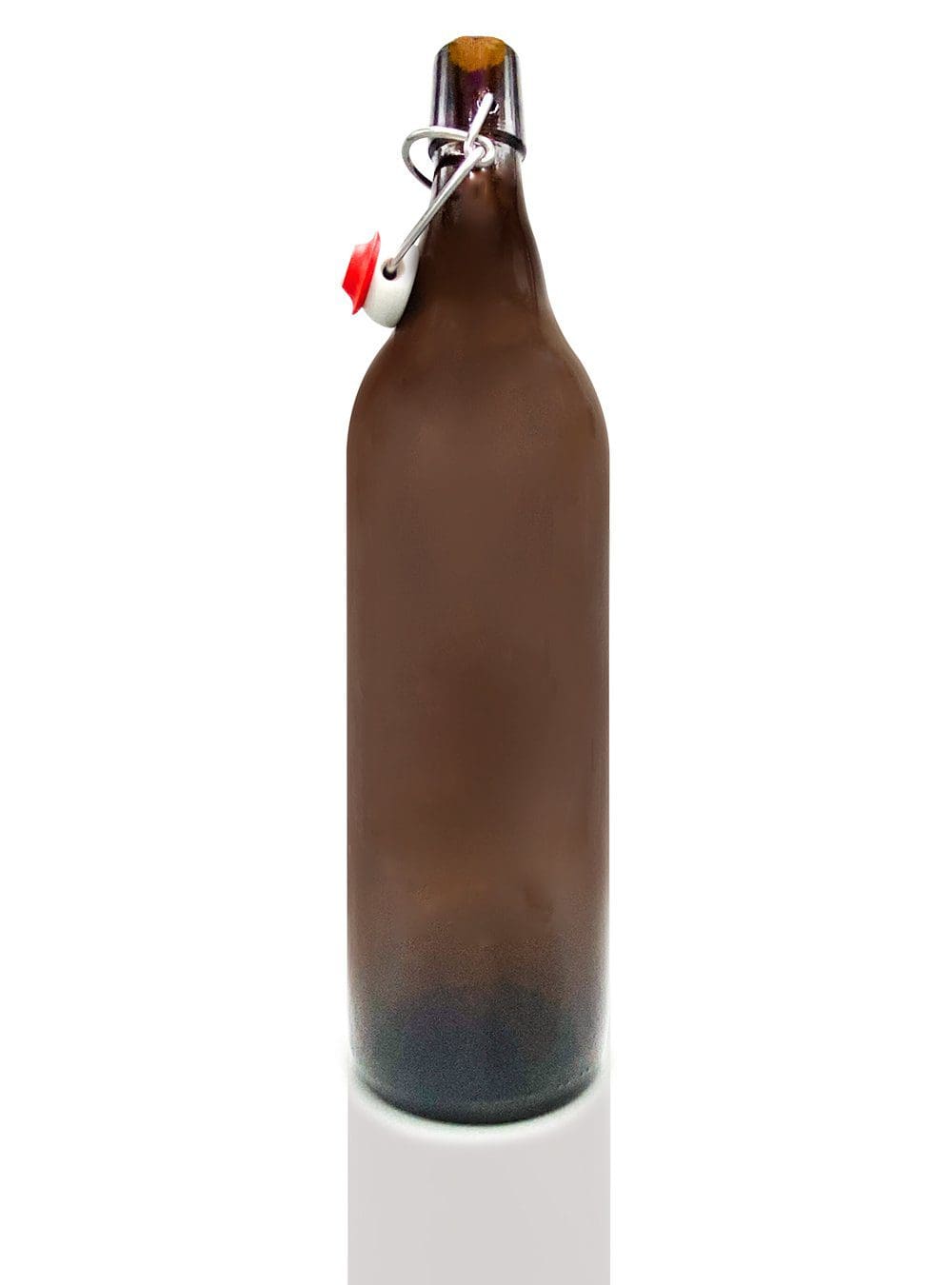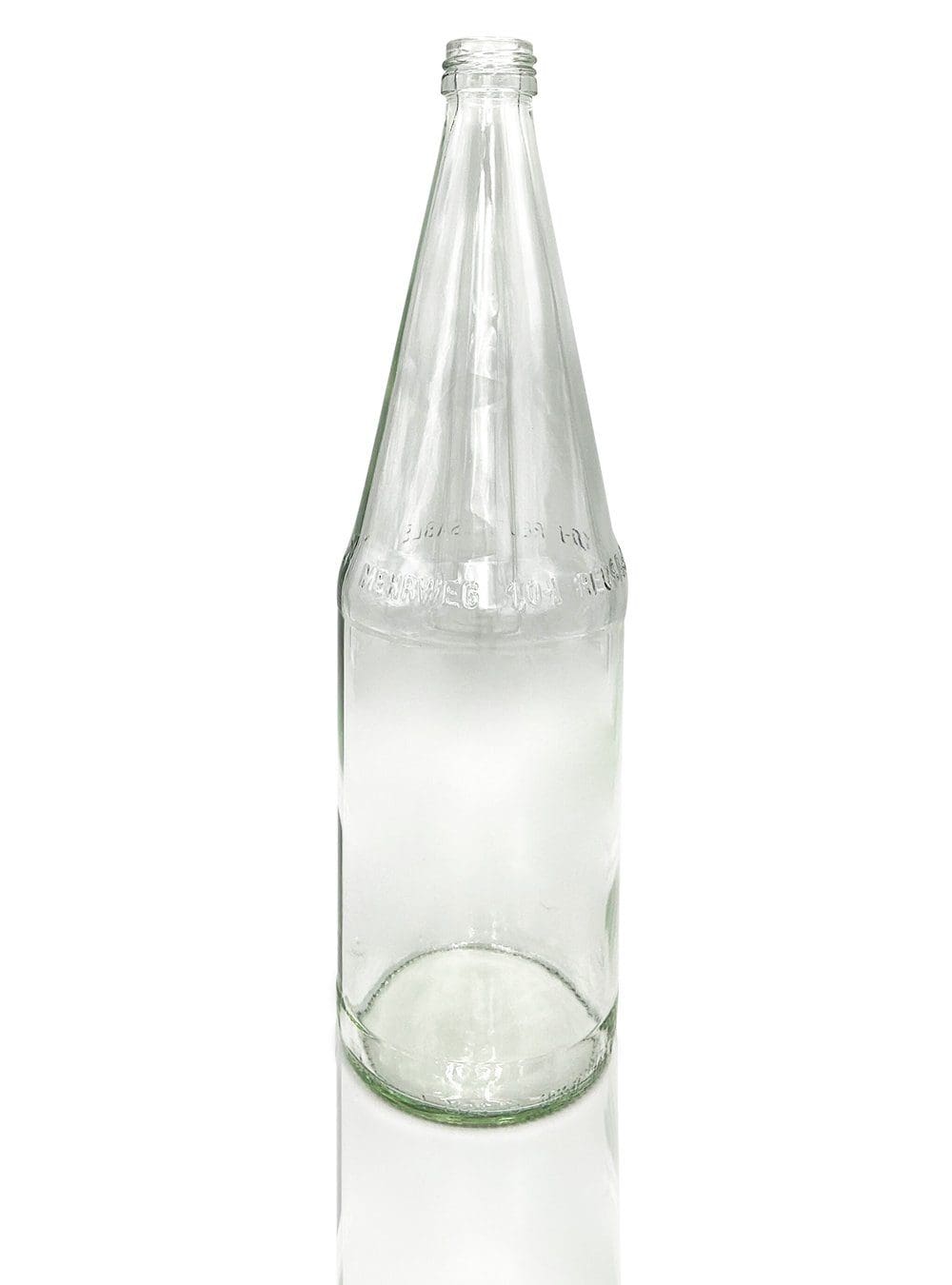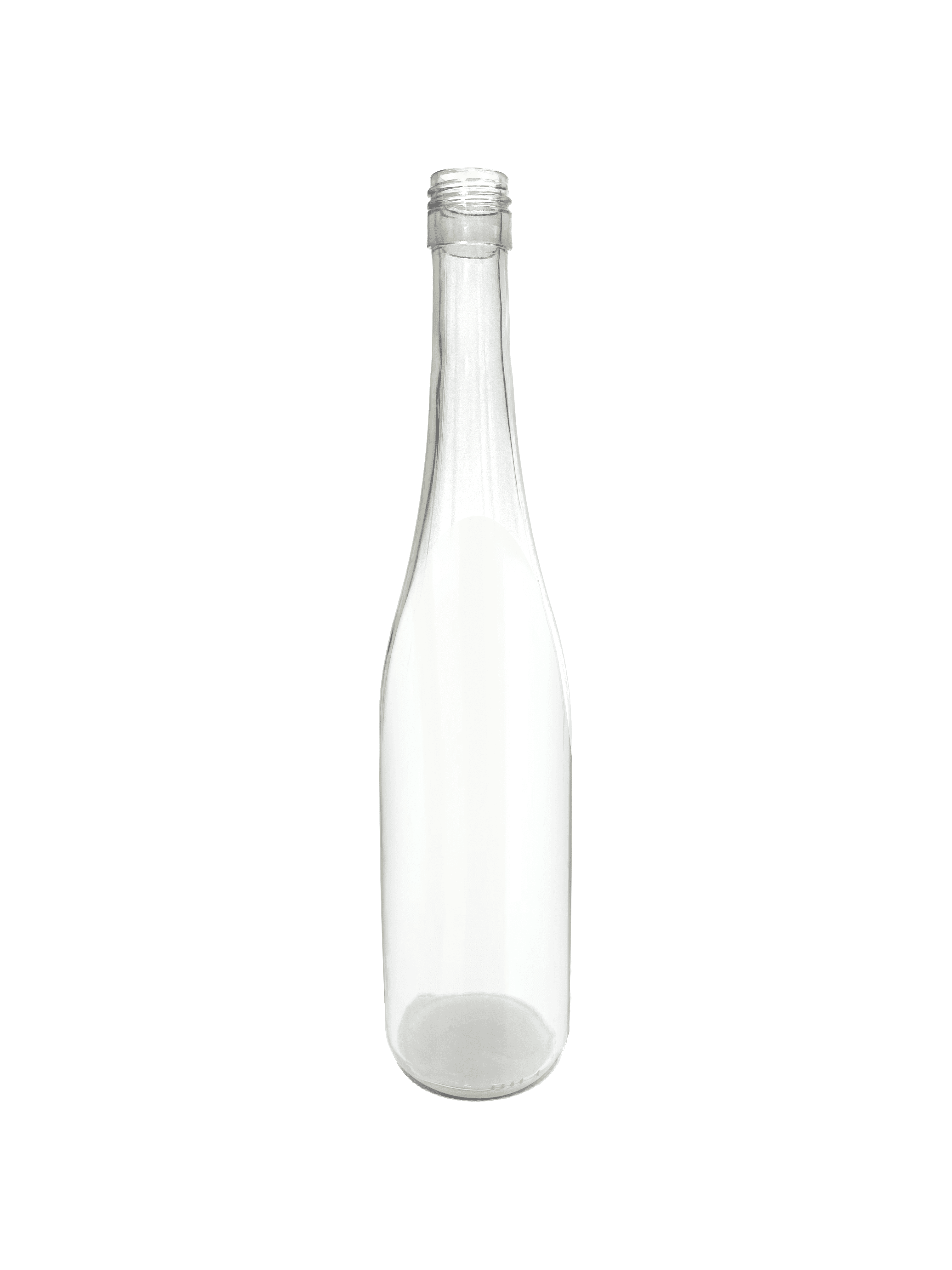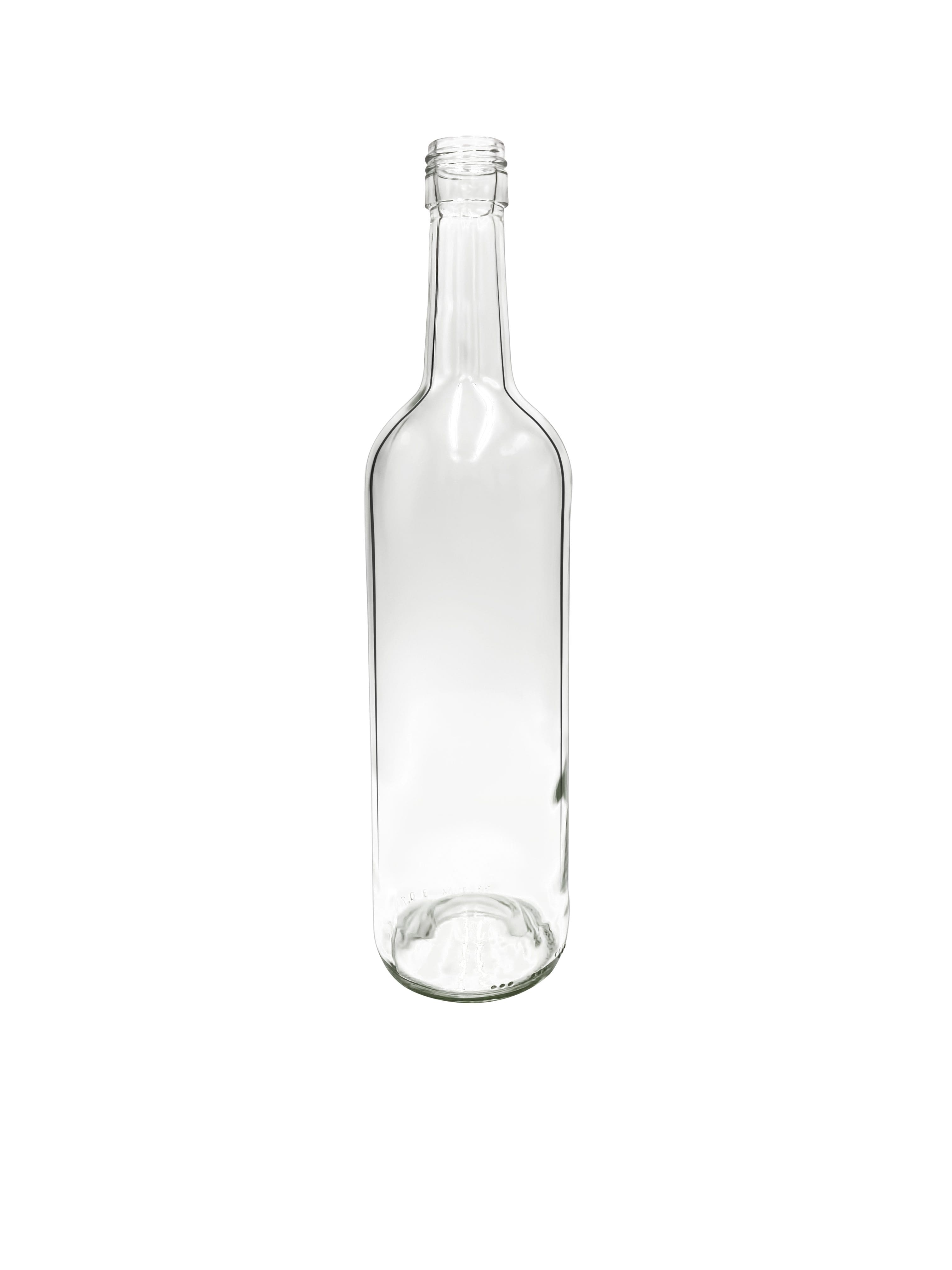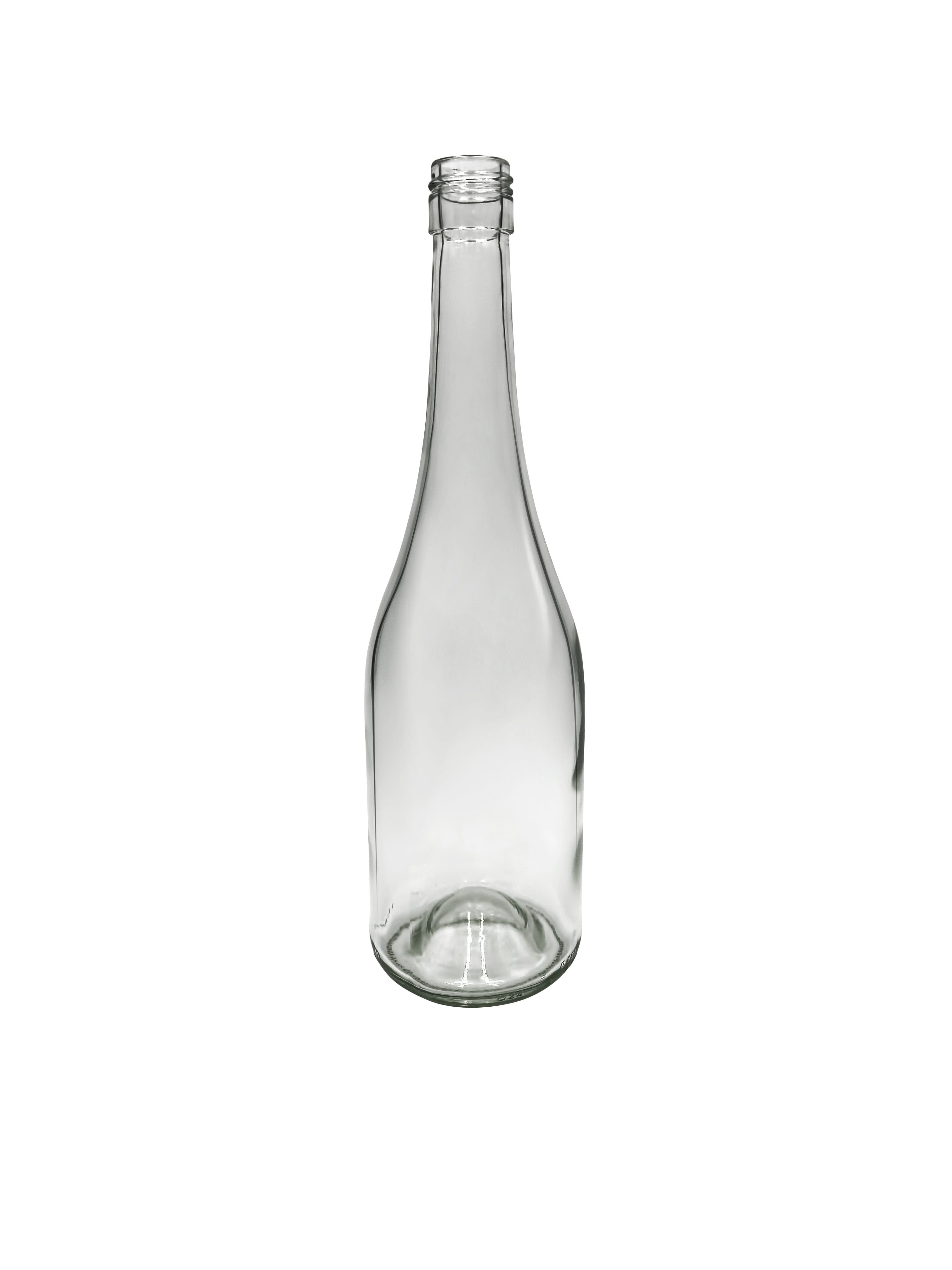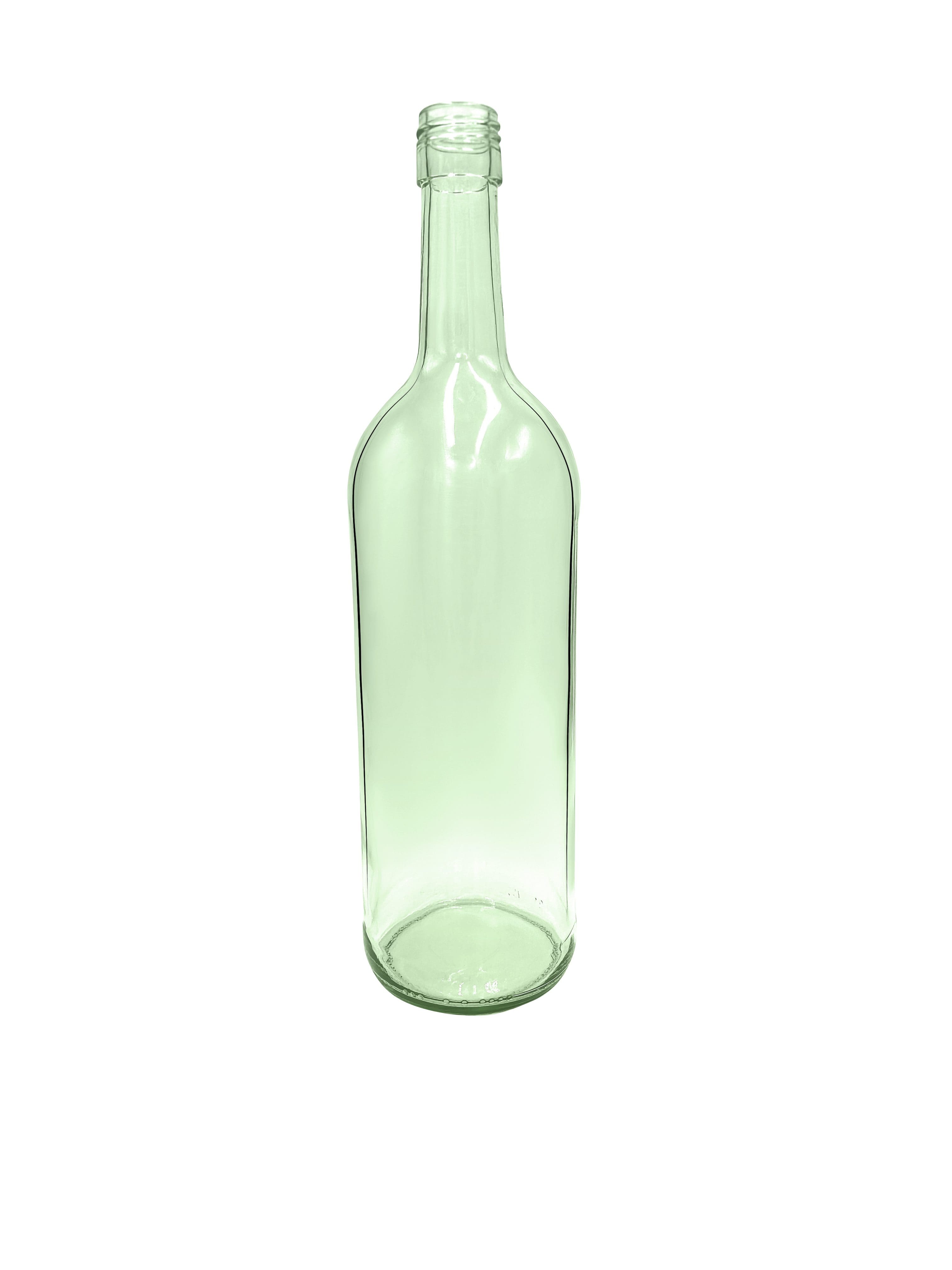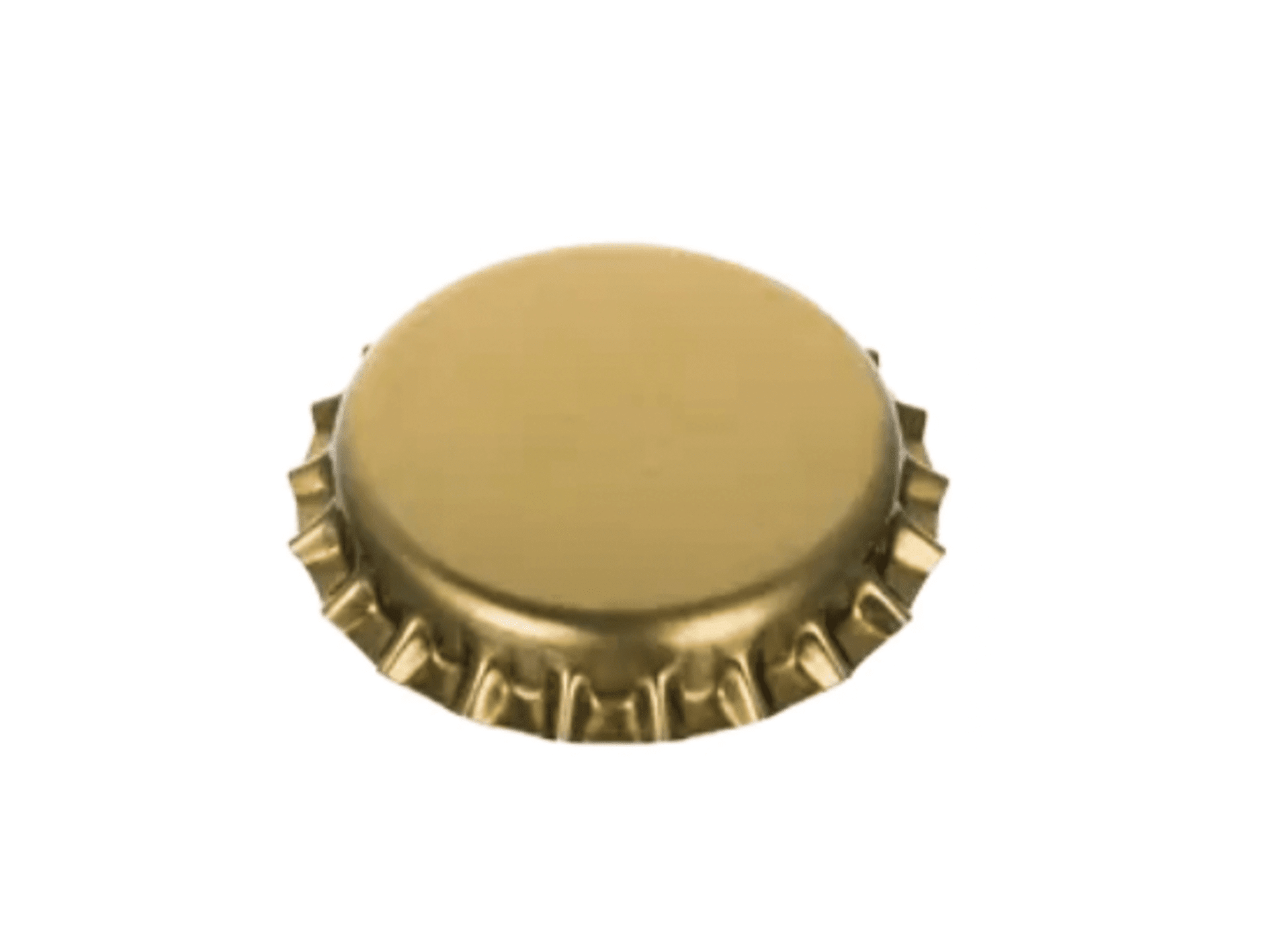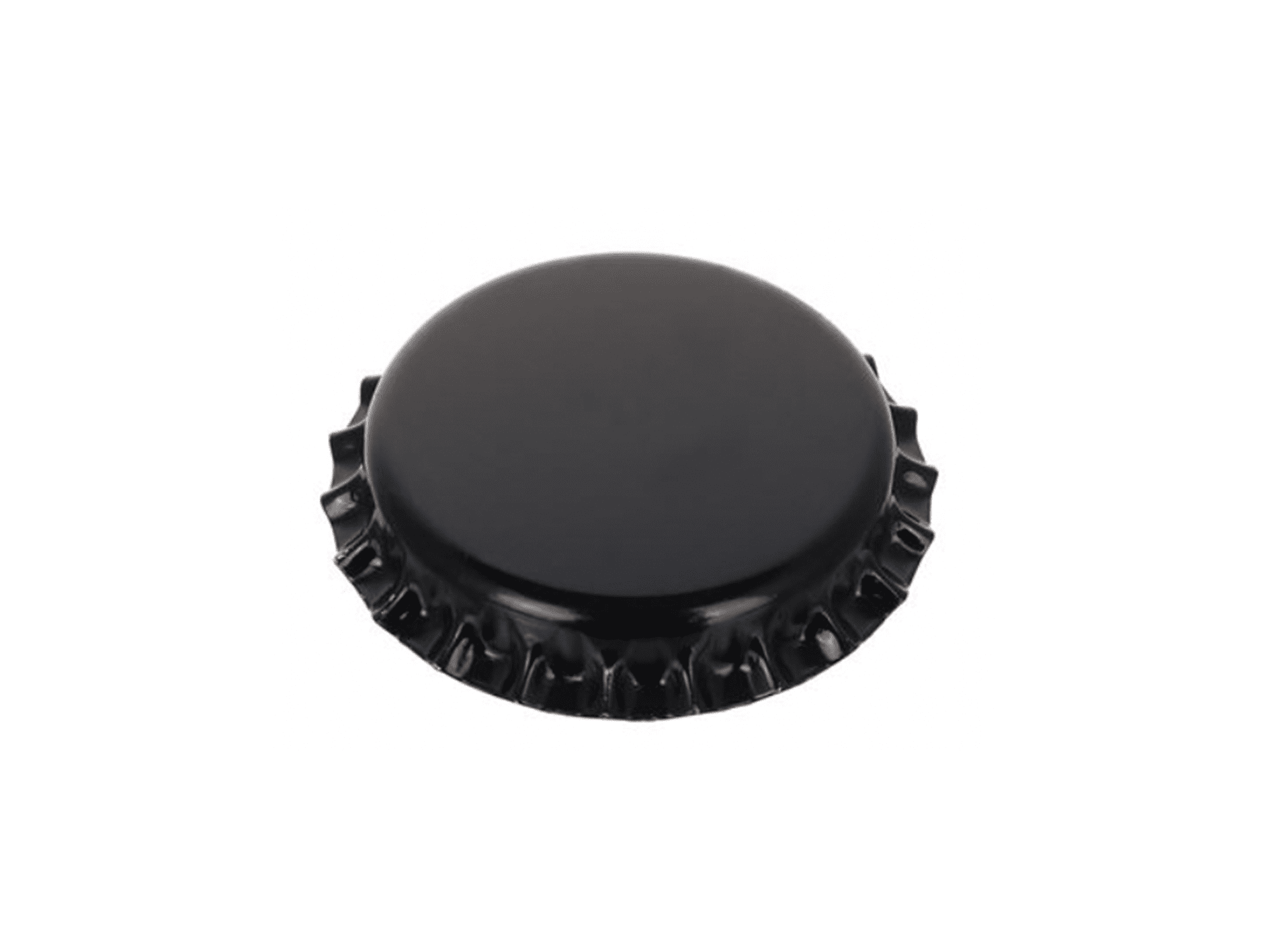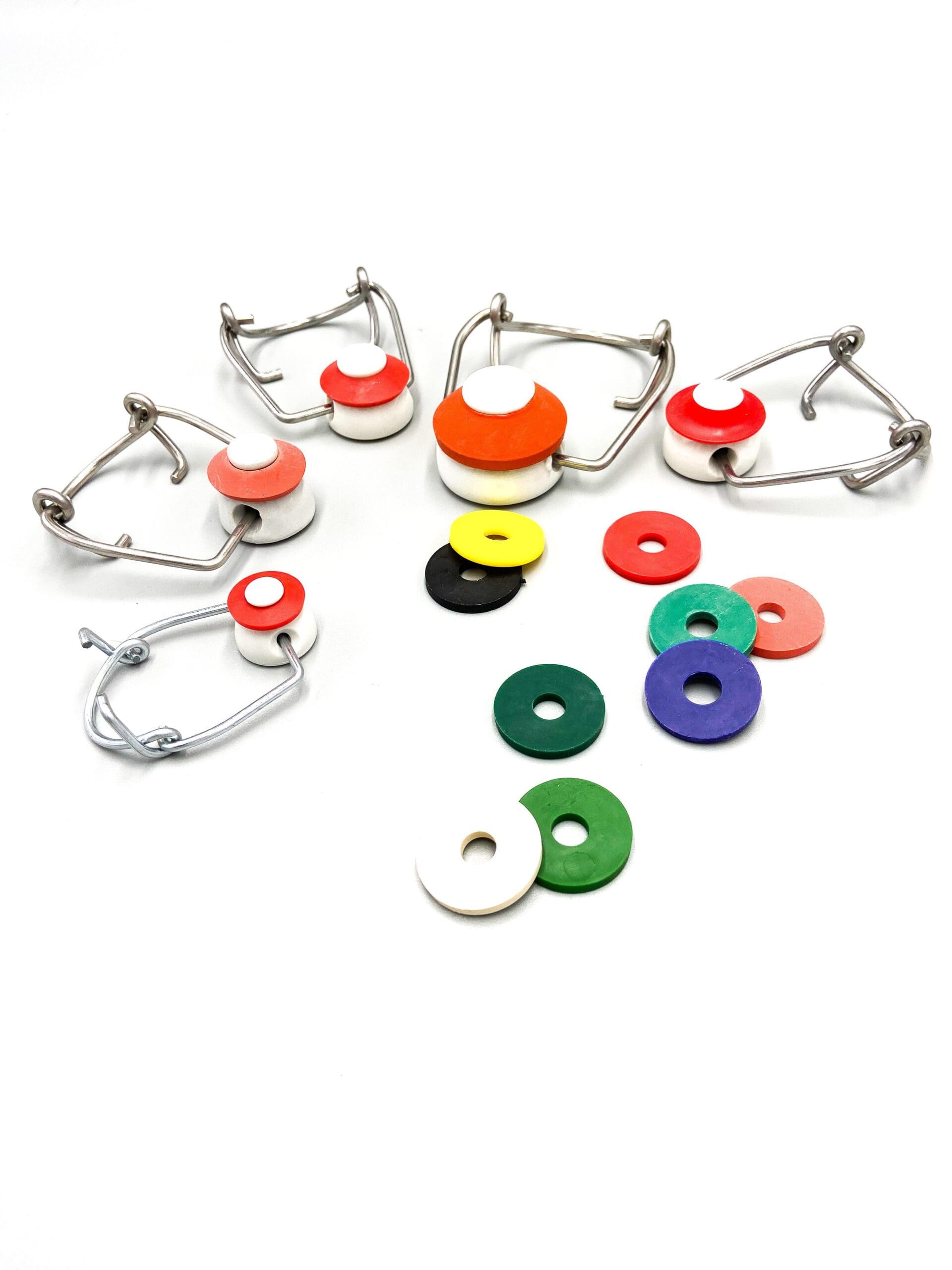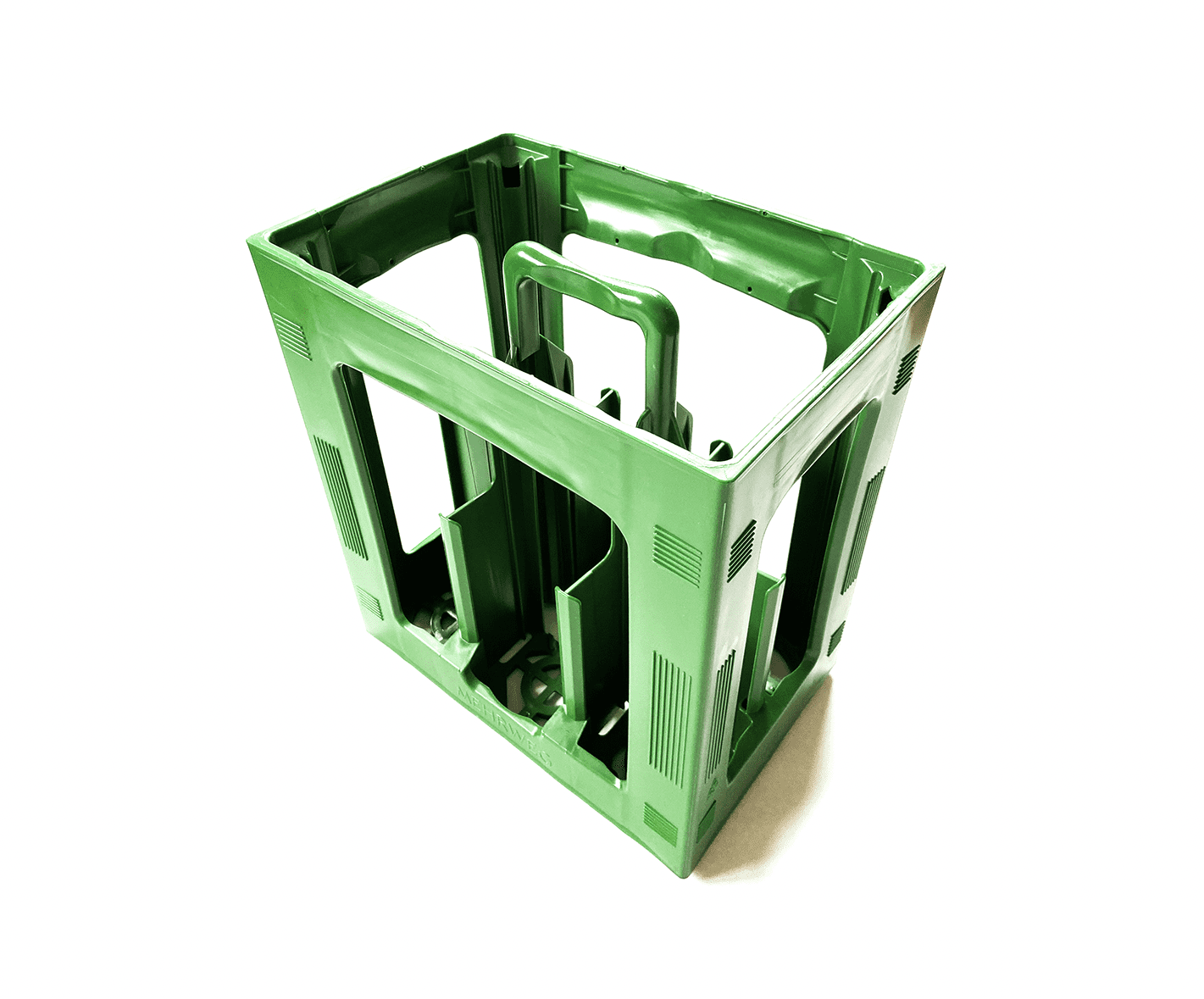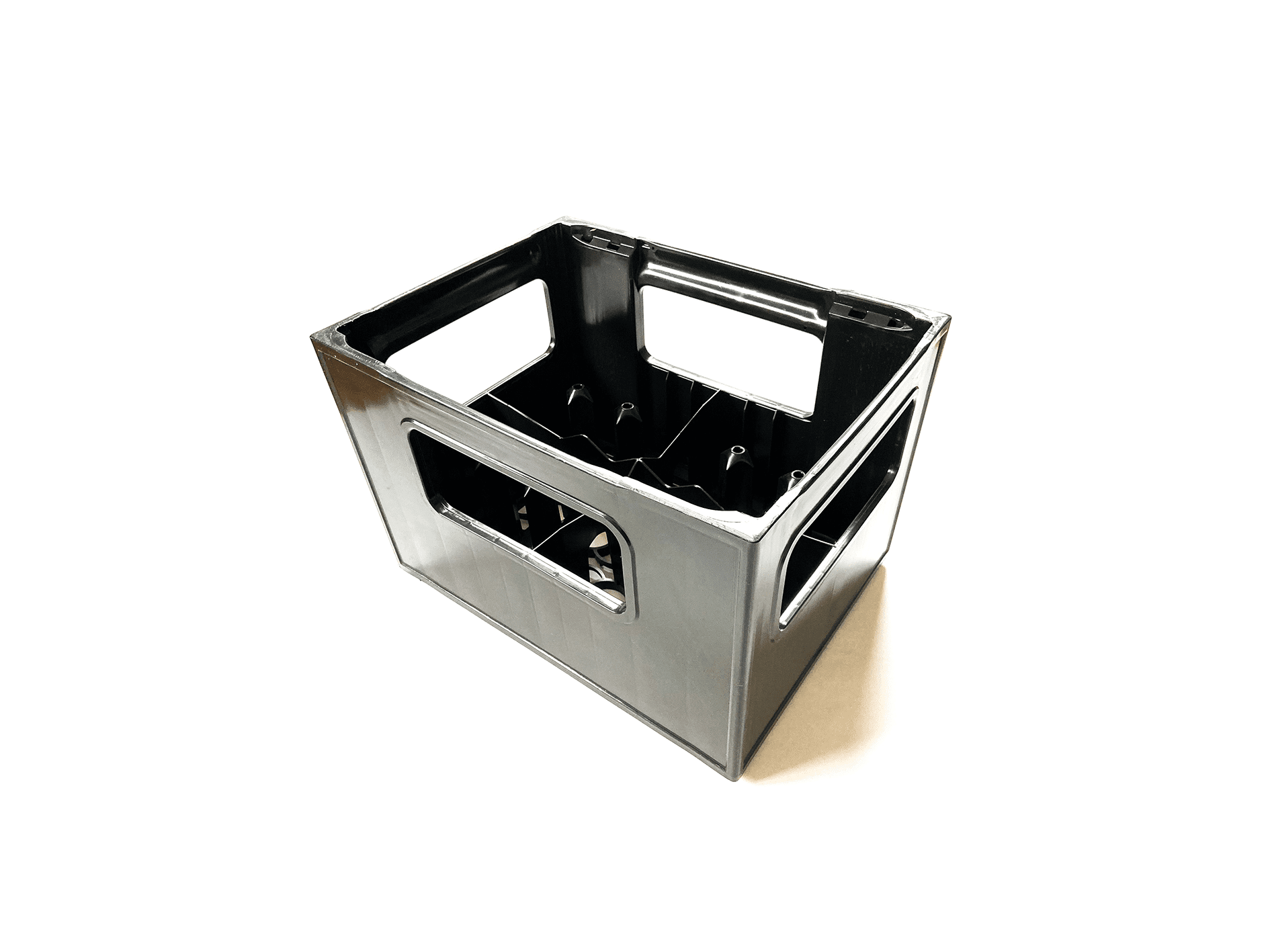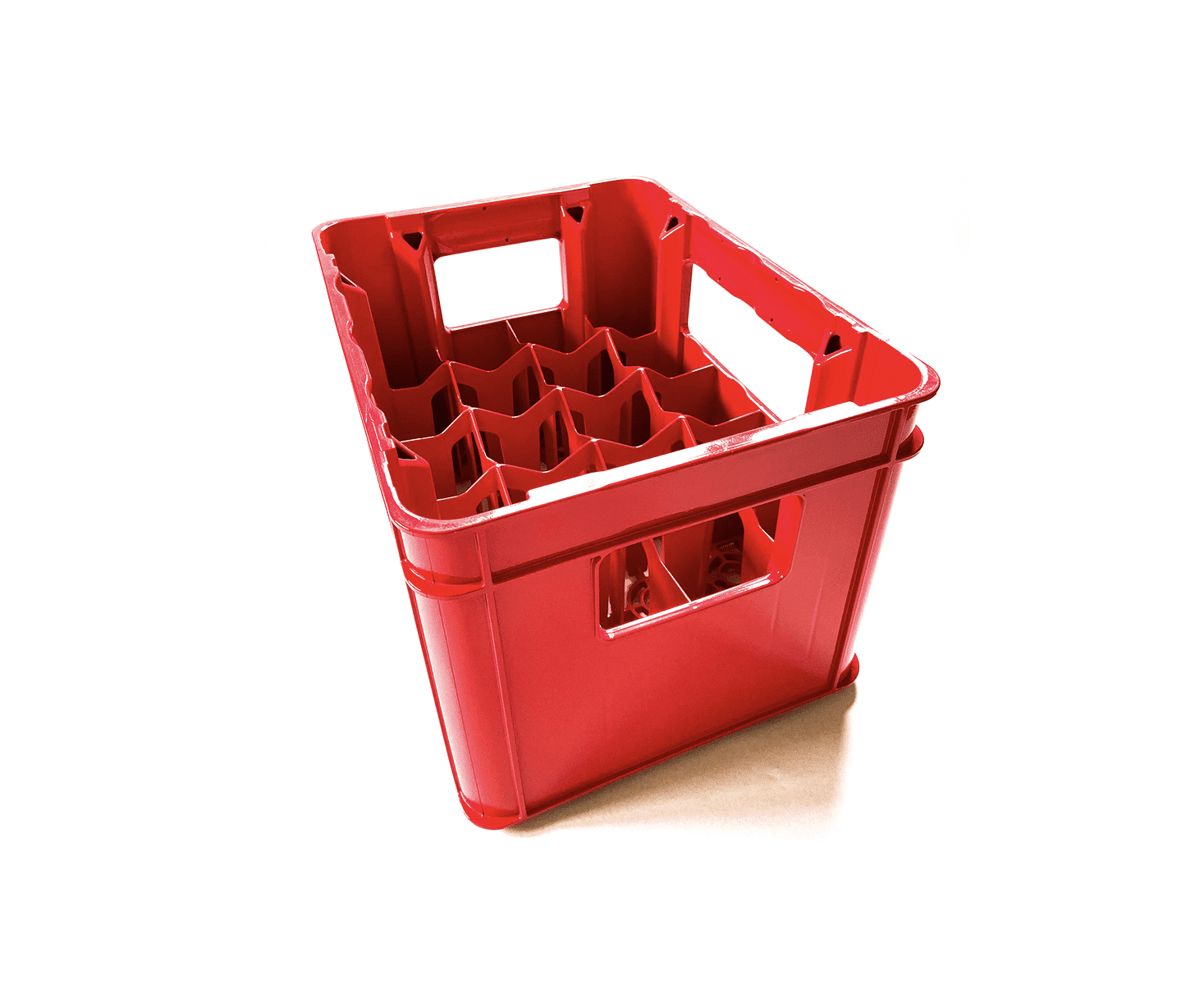Wine bottles
Empty wine bottles made of glass
There are a variety of different types of wine, which differ in their origin, grape varieties, color and taste. They all have one thing in common, your packaging must be made of sturdy and durable glass to protect the wine from light and air while providing an attractive presentation. – Our range includes various bottles for wine:
- Bordeaux bottles
- Burgundy bottles
- Mallet bottles
Empty wine bottles of different colors and sizes. Whether small sizes like the 0.25 l wine bottle, or common sizes like 0.75 l or the 1 l wine bottle, at KP Glas you can buy numerous different wine bottles.
Wine bottles catalog
Categories
- juice bottles / water bottles (26)
- Beer bottles (37)
- Wine bottles (19)
- Beverage crates (7)
Size
- 200ml (5)
- 250ml (5)
- 275ml (1)
- 330ml (21)
- 500ml (12)
- 700ml (1)
- 750ml (17)
- 1000ml (7)
- 2000ml (1)
Color
- green (14)
- white (23)
- brown (24)
- black (2)
- blue (1)
- feuille-morte (2)
- antik (3)
- lichtgrün (2)
- gold (1)
- red-white (1)
Use
- Reuseable (33)
- One way (37)
The top sellers of our wine bottles at a glance:
There are many different types of wine bottles used for different types and regions of wine. Here are some of the most common:
- Standard bottles: These bottles are used for most red and white wines and have a capacity of 750 ml.
- Champagne bottles: These bottles are specially designed for sparkling wines such as Champagne and Prosecco and have a higher capacity than standard bottles.
- Sparkling wine bottles: These bottles resemble champagne bottles, but are smaller and have a capacity of 375 ml or 500 ml.
- Bottles for sweet wines: These bottles have a smaller capacity than standard bottles and are used for sweeter wines such as dessert wines and ice wines.
- Burgundy bottles: These bottles have a more elongated shape and are used for Burgundy wines.
- Bordeaux bottles: These bottles have a wider shape and larger base than standard bottles and are used for Bordeaux wines.
- Rhône bottles: These bottles have a similar shape to Bordeaux bottles, but are slightly smaller and are used for Rhône wines.
- Bottles for port wine: These bottles have a short, compact shape and are used for port wine.
However, this is only an overview, there are many other types of wine bottles used for specific wines, especially regional or historical wines.
Which wine bottle is the right one?
There are no hard and fast rules about what wine goes in what bottles, but there are some general trends.
Wines that are too young to be stored for a long time are often bottled in smaller bottles, such as 187 ml or 375 ml. These sizes are good for one person or a small group who wants to use up the wine quickly.
Standard wines are often bottled in 750 ml bottles, while luxury and fine wines are sold in larger bottles such as 1.5 L or 3 L. These sizes are popular with collectors and wine lovers because they can keep the wine longer without losing its quality.
In terms of the shape of the bottle, the type of wine can also determine which bottle is used. For example, champagne and sparkling wines are bottled in special bottles with a curved neck shape and a strong reinforcement of the bottom to resist the pressure of carbonic acid. Burgundy wines are often bottled in bottle-shaped bottles, while Bordeaux wines are often bottled in wider, shorter bottles.
Ultimately, the choice of bottle for wine depends on a variety of factors, including the type of wine, the brand and the personal taste of the winemaker.
Wine bottles are specially designed containers for the transportation and storage of wine. They are usually made of glass and have a characteristic shape that helps the bottle to preserve the wine and present its characteristics.
Wine bottles must be made of sturdy and durable glass to protect the wine from light and air while providing an attractive presentation.
When you buy wine bottles, KP Glas is your supplier. It is important to check that the bottles meet your requirements, especially in terms of size, material and packaging.come to us.
General information on the production and bottling of wine
Table of Contents
How is wine made?
Wine is made from grapes pressed from the berries of a particular grape variety. Here is a general overview of the process:
- Grape harvest: The grapes are harvested from the vines when they are ripe.
- Destemming and pressing: The grapes are destemmed and pressed to extract the juice.
- Fermentation: The juice is placed in a container where it can ferment itself. During this process, sugars and yeasts are converted into alcohol and carbon dioxide.
- Aging: After fermentation, the wine is transferred to another container where it can age for a long time. This process can take months or even years and helps to improve the taste and texture of the wine.
- Bottling: After aging, the wine is bottled and ready for sale.
Of course, there are many subtleties and variations in the production of wine, depending on the type of wine and the production process. But in general, winemaking follows this basic process.
What wines are there?
There are a variety of different types of wine, which differ by their origin, grape varieties, color and taste. Here are some of the most famous types of wine:
- Red wine: This type of wine is made from red grape must and has a deep red color. There are many different varieties of red wine, such as Cabernet Sauvignon, Pinot Noir, Merlot and Syrah.
- White wine: White wine is made from white grapes or red grapes without skins and has a light yellowish color. Some of the most famous white wine varieties are Chardonnay, Sauvignon Blanc and Riesling.
- Rosé wine: Rosé wine is made from red grape must, but the skins do not remain in contact with the must long enough to give it its red color. Rosé wine has a light pink color and a light, fresh taste.
- Sparkling wine: Sparkling wine is a sparkling wine produced by fermentation in bottles or in a closed container. There are two main types of sparkling wine: champagne and prosecco.
- Sweet wine: Sweet wine is a type of wine that has a higher sugar content than other wines. Some well-known varieties are Port, Sauternes and Riesling.
Of course, there are many other types of wine, but these are some of the most famous and widespread.
When is wine bottled?
Wine is usually bottled after the end of the fermentation process and after a certain maturation. The exact duration depends on many factors, such as the type of wine, the grape variety, the production method and the intended characteristics of the final product. Some wines age in the barrels for only a few months, while others are aged for several years before being bottled. It is important to note that bottling at a particular time is an important decision for the final quality of the wine, and that bottling too early or too late can affect the flavor and aroma profiles.
Who is bottling wine?
Wine is usually bottled by wineries or wine factories. There are both large industrial bottlers and smaller, artisanal bottlers. Some wineries bottle their own wine, while others sell their wine to third parties who are responsible for bottling. There are also independent bottlers who source wine from various sources and sell it under their own label.
How is wine bottled?
Bottling wine is usually done in several steps:
- Cleaning and preparation: The bottles and corks must be thoroughly cleaned and disinfected to ensure that no impurities enter the wine.
- Filling: The wine is filled into the bottles with a special machine, carefully controlling the correct quantity.
- Cork: After filling, a cork is inserted into the bottle and pressed into place with a cork press.
- Labeling: The bottles are provided with labels containing information such as the type of wine, the year of harvest, the origin and the bottler.
- Packaging: The filled bottles are carefully packed to ensure that they are not damaged during transport.
These steps must be performed carefully to ensure that the wine in the bottle remains undamaged and maintains its quality until it is ready for sale or use.
Which closures for wine bottles?
There are several types of closures for wine bottles, which facilitate the storage and transportation of wine and preserve its quality. Here are some of the most common:
- Corks: Corks are the traditional choice for wine bottle stoppers and have been used since the 17th century. They provide good air tightness and allow the wine to develop over time.
- Screw caps: Screw caps are a modern alternative to corks and are often used for wines that are to be drunk quickly. They are easy to open and close and provide good air tightness.
- Cork synthetic closures: Cork synthetic closures are a combination of corks and screw caps and are often used for wines that require extended storage.
- Plastic closures: Plastic closures are often used for wines intended for quick consumption. They are lightweight, durable and easy to open and close.
The choice of the right closure depends on several factors, such as the type of wine, age and intended storage time.
International wine:
Wineries:
Vineyards are growing areas where wine is produced. These are agricultural farms, mostly specialized in viticulture. On a winery, vines are grown, harvested and processed to eventually make wine. The size of a winery can range from a few hectares to several hundred. Wineries usually produce different varieties and types of wine, including red wine, white wine, rosé wine and sparkling wine. The wine production process, including growing, harvesting, processing and bottling, is monitored and controlled at a winery.
Grapevines:
The perfect grape
There is no single definition of what the perfect grape is, as it depends on what wine is to be produced. For some winemakers, a perfect grape is one that is ripe and full of flavor, while others prefer a grape that is not fully ripe to create greater acidity and freshness in the wine.
Some of the factors considered when evaluating the quality of grapes are:
- Ripeness: A perfect grape is usually fully ripe and has the right sugar content for the desired type of wine.
- Taste and aroma: The grape should have a rich aroma and pleasant taste.
- Physical characteristics: a perfect grape should be free of pests and diseases and show no signs of mold or rot.
- Fruit to stem ratio: A perfect grape should have a good balance between fruit and stem to ensure an optimal ratio of acidity, sugar and aroma in the wine.
Ultimately, the idea of the perfect grape depends on the personal preferences and goals of the winemaker.
Wine regions
There are many different wine growing regions around the world. Some of the most famous and respected wine regions are Bordeaux and Burgundy in France, Toscana in Italy, the Palatinate and Rheinhessen in Germany, Napa Valley and Sonoma Valley in California, Rioja in Spain and the Barossa Valley in Australia. Each wine region has its own history, culture and variety of grape varieties and wine styles. The different climatic and geological conditions in the wine-growing regions influence the taste and quality of the wines produced there.
Which wine closure for which wine?
The wine cork
A cork is often used to seal wine when it is to be stored for a long time. Corks are a common choice for high quality and storable wines, such as red wines. This is due to some advantages that offer corks, such as:
- Airtightness: corks provide a good seal and prevent air from entering the bottle, which can affect the wine.
- Aging: corks allow the wine to mature and improve over time.
- Tradition: corks have a traditional charm and are closely associated with viticulture.
It should be noted, however, that there is a small risk that a small percentage of corks can affect the taste of the wine, which is known as a “cork defect”. Therefore, some wines use other closures such as screw caps, synthetic corks or glass closures.
KP Glas - Your partner for glass packaging
- Glass packaging with conviction
- Absolute service orientation - the focus is on our customers
- Powerful packaging solutions with versatile glass bottles
- Personal and cooperative customer relationships
- Enjoyment of the glass industry and a wide variety of people


